Vintage

They are American, Italian, Scandinavian or French. Real icons of design in the
Find out who is the first women to have been awarded the Industrial Arts Medal or again which designers founded the Atelier de Recherche Plastique (ARP)? Who’s at the origin of the colored shell-chairs of the Parisian metro? Which famous French architect contributed to the
At Galerie 44, you buy an item also for its history.
Subcategories
-
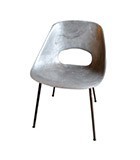
Pierre Guariche
<p style="text-align: justify;"> <img src="https://www.galerie44.com/img/cms/Designers/pierre-guariche.jpg" alt="" width="1440" height="521" /></p> <p style="text-align: justify;"> </p> <p style="text-align: justify;">Iconic French designer of the 20<sup style="box-sizing: border-box; margin: 0px; padding: 0px; border: 0px; outline: 0px;">th</sup> century, Pierre Guariche has marked his time by allying esthetics and mass production. Born in 1926, he enters the ENSAD (Ecole Nationale des Arts Décoratifs) at the age of 19. He graduates in 1949, he starts working as an intern with Marcel Gascoin a post-war star decorator. His real career only starts in 1950 when he releases his first lamp, the Rotaflex lamp.</p> <p style="text-align: justify;">If he releases his first models alone and exposes them at the Domestic Science Fair and then at the Decorators Artist Fair, his success with the mainstream catches the attention of manufacturers. Pierre Guariche then designs furniture and decoration objects for different brands such as the MAI gallery, the Airborne company, Pierre Disderot and Steiner.</p> <p style="text-align: justify;">Pierre Guarriche associates with two other decorators, Michel Mortier and <a href="https://www.galerie44.com/en/53-joseph-andre-motte">Joseph André Motte</a> to found the Atelier de Recherche Plastique (ARP) in 1954. He now creates furniture suites for Charles Minvielle (see the desk model Président). In 1957, Pierre Guariche heads the furniture section fo the Belgian company Meurop and slowly turns to interior design. In 1965, He is awarded the René Gabriel prize and participates to the planning of the La Plagne ski resort and the Firminy hospital. Pierre Guariche died in 1995. His creations are today reissued by Maisons du Monde</p> -
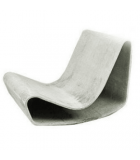
Willy Guhl
<p style="box-sizing: border-box; margin: 0px; padding: 0px; border: 0px; outline: 0px; font-family: futurapt-book-webfont, Tahoma, Arial, Helvetica, sans-serif; font-size: 19.2px;"><img src="https://www.galerie44.com/img/cms/Designers/willy-guhl.jpg" alt="" width="1440" height="521" /> </p> <p style="box-sizing: border-box; margin: 0px; padding: 0px; border: 0px; outline: 0px; font-family: futurapt-book-webfont, Tahoma, Arial, Helvetica, sans-serif; font-size: 19.2px;"></p> <p style="box-sizing: border-box; margin: 0px; padding: 0px; border: 0px; outline: 0px; font-family: futurapt-book-webfont, Tahoma, Arial, Helvetica, sans-serif; font-size: 19.2px;"> </p> <p style="box-sizing: border-box; margin: 0px; padding: 0px; border: 0px; outline: 0px; font-family: futurapt-book-webfont, Tahoma, Arial, Helvetica, sans-serif; font-size: 19.2px;">Born in 1915 from a carpenter father, Willy Guhl is the pioneer for <g class="gr_ gr_20 gr-alert gr_spell gr_inline_cards gr_run_anim ContextualSpelling ins-del multiReplace" id="20" data-gr-id="20">swiss</g> industrial design. After being trained as cabinetmaker-he opened his own cabinetmaker workshop in 1939, he attends the Zurich School of Applied Arts in which he will teach in 1941 and that he will <g class="gr_ gr_17 gr-alert gr_gramm gr_inline_cards gr_run_anim Punctuation replaceWithoutSep" id="17" data-gr-id="17">later on</g> become the director in 1951. The Röthlisberger House releases his first furniture pieces in 1941, the <g class="gr_ gr_21 gr-alert gr_spell gr_inline_cards gr_run_anim ContextualSpelling ins-del multiReplace" id="21" data-gr-id="21"><g class="gr_ gr_21 gr-alert gr_spell gr_inline_cards gr_run_anim ContextualSpelling ins-del multiReplace" id="21" data-gr-id="21"><g class="gr_ gr_21 gr-alert gr_spell gr_inline_cards gr_run_anim ContextualSpelling ins-del multiReplace" id="21" data-gr-id="21">Bankstuhl</g></g></g>, a wooden and <g class="gr_ gr_18 gr-alert gr_spell gr_inline_cards gr_run_anim ContextualSpelling ins-del" id="18" data-gr-id="18">chair-bank</g>.</p> <p style="box-sizing: border-box; margin: 0px; padding: 0px; border: 0px; outline: 0px; font-family: futurapt-book-webfont, Tahoma, Arial, Helvetica, sans-serif; font-size: 19.2px;"></p> <p style="box-sizing: border-box; margin: 0px; padding: 0px; border: 0px; outline: 0px; font-family: futurapt-book-webfont, Tahoma, Arial, Helvetica, sans-serif; font-size: 19.2px;">After World War II, Willy Guhl participates to the Housing Aid Institute founded in 1945 to produce furniture for the European reconstruction. In the <g class="gr_ gr_16 gr-alert gr_gramm gr_inline_cards gr_run_anim Grammar multiReplace" id="16" data-gr-id="16">1950’s</g>, with the increasing interest of designers for innovative material, Willy Guhl is the first to use <g class="gr_ gr_15 gr-alert gr_spell gr_inline_cards gr_run_anim ContextualSpelling ins-del multiReplace" id="15" data-gr-id="15">scobalit</g> for his chair-shell, as well as fiberglass for his bench. In 1951, the Eternit AG company in Niederurnen commissions to him the order of new plants vessels.</p> <p style="box-sizing: border-box; margin: 0px; padding: 0px; border: 0px; outline: 0px; font-family: futurapt-book-webfont, Tahoma, Arial, Helvetica, sans-serif; font-size: 19.2px;"></p> <p style="box-sizing: border-box; margin: 0px; padding: 0px; border: 0px; outline: 0px; font-family: futurapt-book-webfont, Tahoma, Arial, Helvetica, sans-serif; font-size: 19.2px;">The Eternit, a cement-fiber developed for the production of roof and tubes catches the interest of Willy Guhl for its fiber texture that is tear-resistant, as well as climate variation proof. According to him, «no construction material used in such thin shape gives so much stability than the Eternit. » The designer then launches into research on new shapes of seats and gives birth to the Loop armchair in 1954, a « ribbon-seat » that became a classic of furniture which was awarded the Die Gute Form Prize in 1955. His last realization was the Perreuse table in 2002. Willy Guhl died in 2004.</p> -
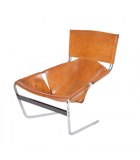
Pierre Paulin
<p><img src="https://www.galerie44.com/img/cms/pierre-paulin-designer-galerie44.jpg" alt="" width="1050" height="380" /></p> <p> </p> <p style="text-align: justify;">The king of <g class="gr_ gr_24 gr-alert gr_gramm gr_inline_cards gr_run_anim Grammar only-ins doubleReplace replaceWithoutSep" id="24" data-gr-id="24">jersey</g>, Pierre Paulin was born in <g class="gr_ gr_26 gr-alert gr_gramm gr_inline_cards gr_run_anim Grammar only-ins replaceWithoutSep" id="26" data-gr-id="26">Paris</g> 1927. He grew up in Laon in the Aisne department where he discovers a passion for family creations, along with his uncles, a sculptor and car designer respectively. A student at the Camondo School in 1951, he became the student of Maxime Old then entering the firm of Marcel Gascoin. Influenced by Alvar Aalto’s Scandinavian furniture, but also by the modernism of Charles and Ray Eames and Florence Knoll, Pierre Paulin is noticed at the Salon des Arts ménagers in 1953. He works with Thonet France which manufactures his first furniture in 1954.</p> <p style="text-align: justify;">In 1958, Pierre Paulin joins the Maison Artifort in Maastricht. There, he develops a range of round-shaped seats and bright colors, that will bring him success. Designed in a molded wooden shell covered in foam and covered <g class="gr_ gr_17 gr-alert gr_spell gr_inline_cards gr_run_anim ContextualSpelling ins-del" id="17" data-gr-id="17">in <g class="gr_ gr_18 gr-alert gr_gramm gr_inline_cards gr_disable_anim_appear Grammar only-ins doubleReplace replaceWithoutSep" id="18" data-gr-id="18">extensible</g></g> fabric called jersey, some have become icons such as the Ribbon chair, the Tongue chair or the <g class="gr_ gr_20 gr-alert gr_gramm gr_inline_cards gr_run_anim Style multiReplace" id="20" data-gr-id="20">Mushroom armchair</g> (also see the Oyster armchair, the Bulb sofa or the ABCD sofa).</p> <p style="text-align: justify;">In the <g class="gr_ gr_21 gr-alert gr_gramm gr_inline_cards gr_run_anim Grammar multiReplace" id="21" data-gr-id="21">1970’s</g>, Pierre Paulin helped bring modernity into the Elysee presidential palace by arranging the private apartments of President Pompidou. He then created the official furniture for President Mitterand in 1984 before renovating Jacques Chirac’s dining room. In parallel, he co-founded the ADSA agency in 1975 to launch industrial projects (Calor/Tefal, Citroën, Airbus, la SNCF, etc.). Pierre Paulin is awarded the national prize of Industrial Creation in 1987 and his furniture is exposed in the greatest museums in the world including the MoMA in New York or the Georges Pompidou Center. The designer died in Montpellier in 2009. </p> -
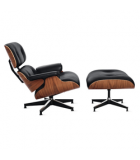
Charles et Ray Eames
<p><img src="https://www.galerie44.com/img/cms/Designers/Charles-et-Ray-Eames.jpg" alt="" width="1440" height="521" /></p> <p> </p> <p style="text-align: justify;">They are the most famous designer duo in the post-War. Him, Charles Ormond Eames Jr, born in 1907 in Missouri, starts by studying architecture in Washington University in Saint Louis in 1925, then opens an architect study in 1930 where he works with Eliel Saarinen who will invite him in 1938 to study at the Academy of Arts in Cranbrook (Michigan). <g class="gr_ gr_21 gr-alert gr_gramm gr_inline_cards gr_run_anim Punctuation only-del replaceWithoutSep" id="21" data-gr-id="21">She,</g> is Ray Berenice Alexandra Kaiser, born in 1912 in California, she first studies abstract painting between 1933 and 1939 before studying at the Academy of Arts in Cranbrook in 1940, where she assists Charles Eames in his work, he is <g class="gr_ gr_18 gr-alert gr_spell gr_inline_cards gr_run_anim ContextualSpelling ins-del" id="18" data-gr-id="18">then</g> professor in industrial design. Charles and Ray get married in 1941.</p> <p style="text-align: justify;">Having settled in California, the couple is subsidized by the US government during World War II for their technical advances on plywood. They produce braces and stretchers for the US Navy wounded. In order to perfect their technic, which will give birth to their famous Plywood chair. Nevertheless, their company, Evans Products is a flop. But this is not including the fact that the production rights are acquired by Herman Miller, who will put the couple on the track for success. During their whole career, the Eames haven’t stopped experimenting new techniques with all sorts of materials (wood, fiberglass, steel wire, plastic), and only abide by a utilitarian design accessible to the masses.</p> <p style="text-align: justify;">After exhibiting their famous Los Angeles house, made in prefab in a parallelepiped shape in 1949, Charles and Ray release their greatest success in 1956: the Eames Lounge Chair, a molded plywood armchair that will sell in more than six million units and is part of the permanent collection of the Museum of Modern Art in New York. But it’s not the only creation of the couple to make it into history (see the DSW chair, the wire chair, <g class="gr_ gr_23 gr-alert gr_spell gr_inline_cards gr_run_anim ContextualSpelling ins-del multiReplace" id="23" data-gr-id="23">l'armchair</g> DAR…). Charles died in 1978, Ray ten years later, but their furniture is still manufactured by Vitra and Herman Miller. If the couple is mostly famous for their furniture, Charles and Ray Eames were also architects, producers, scenographers for exhibitions and toy designers. </p> -
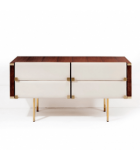
Roger Landault
<p><img src="https://www.galerie44.com/img/cms/Designers/roger-landault-galerie44.jpg" alt="" width="1440" height="521" /></p> <p style="text-align: justify;"> </p> <p style="text-align: justify;">Born in 1919, Roger Landault spends his school years at the Applied Arts school in Paris. His career is marked by a remarkable adaptation ability: the French designer evolves with his time, going from handcrafted modern furniture to his beginnings in thermoformed plastic works in the 1970’s such as dinner tables with integrated banks called Unibloc manufactured by Steiner.</p> <p style="text-align: justify;">In 1945, he is hired by the Louvre <g class="gr_ gr_12 gr-alert gr_spell gr_inline_cards gr_run_anim ContextualSpelling ins-del multiReplace" id="12" data-gr-id="12">Studium</g> where he is appointed as artistic director. The same year, he wins the first prize of the Meuble de France contest. He catches the attention of the A.B.C company in 1946, for which he creates several product lines: from the reconstruction furniture with Junior (1951-1954), juxtaposed creations in solid wood with Dakar and Rotterdam (1955-1959) rewarded by the René-Gabriel award, a great range of materials with Panama (1959-1961, see also the leather coated dressing table), to Scandinavian style lines with Chatelaine and Rio (1960-1961). But Roger Landault also works with other manufacturers such as Bouvier (see the 6517 <g class="gr_ gr_13 gr-alert gr_gramm gr_inline_cards gr_run_anim Grammar multiReplace" id="13" data-gr-id="13">chair</g> manufactured from 1954).</p> <p style="text-align: justify;">Roger Landault died in 1983.</p> -
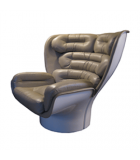
Joe Colombo
<p><img src="https://www.galerie44.com/img/cms/Designers/joe-colombo-galerie44.jpg" alt="" width="1440" height="521" /></p> <p> </p> <p style="text-align: justify;">First starting with painting and sculpture until 1949 at the Academy of Fine Arts in Brera, Milan, Joe Colombo (1939-1971) followed with architecture studies at the Polytechnic school in Milan until 1954. He returns to his first passion in the <g class="gr_ gr_27 gr-alert gr_gramm gr_inline_cards gr_run_anim Grammar multiReplace" id="27" data-gr-id="27">1950’s</g> by joining the nuclear painting movement founded by Enrico Baj. His drawings already are a foretelling of the futuristic vision that will be a hallmark of his furniture. He then replaces his father at the head of the family company at his death in 1950, a job he will leave in 1961.</p> <p style="text-align: justify;">Joe Colombo’s designer career starts in 1962 when he opens his first agency in Milan. With his brother Gianni Colombo, he creates the Acrilica lamp and the Elda armchair in 1963. In the <g class="gr_ gr_26 gr-alert gr_gramm gr_inline_cards gr_run_anim Grammar multiReplace" id="26" data-gr-id="26">1960’s</g>, he collaborates with the greatest manufacturers such as Kartel (see the 4801 <g class="gr_ gr_24 gr-alert gr_gramm gr_inline_cards gr_run_anim Grammar multiReplace" id="24" data-gr-id="24">armchair</g>), Zanotta, Stilnovo, Alessi or O-Luce and is awarded many prizes (Compasso d’Oro and the Premier Design International Award).</p> <p style="text-align: justify;">His innovative, futuristic or even utopian style is within the great streams of the 1960’s such as Pop Art. One of the main axes of his work is about researching modular and flexible systems. The Tube Chair, in 1969, made up of four PVC tubes of varying diameters covered in foam and able to take different positions is a perfect example.</p> <p style="text-align: justify;">At the end of the <g class="gr_ gr_21 gr-alert gr_gramm gr_inline_cards gr_run_anim Grammar multiReplace" id="21" data-gr-id="21">1960’s</g>, Joe Colombo dedicates himself to functional « habitat cells » and develops the concept of anti-design. His premature death at the age of 41 puts an abrupt end to his career. He was then one of the most famous designer and remains one of the most influential <g class="gr_ gr_20 gr-alert gr_gramm gr_inline_cards gr_run_anim Grammar multiReplace" id="20" data-gr-id="20">designer</g> of this time. </p> -
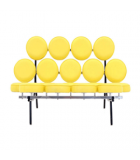
George Nelson
<p><img src="https://www.galerie44.com/img/cms/Designers/george-nelson-galerie44.jpg" alt="" width="1440" height="521" /></p> <p> </p> <p style="box-sizing: border-box; margin: 0px; padding: 0px; border: 0px; outline: 0px; font-family: futurapt-book-webfont, Tahoma, Arial, Helvetica, sans-serif; font-size: 19.2px;">An American Designer, George Nelson was born in 1908 in Connecticut. After Architecture studies at Yale, he gets a scholarship to study at the American Academy in Rome from 1932 to 1934. He takes the opportunity to travel throughout Europe where he interviews famous modern architects such as Le Corbusier, Walter Gropius, Gio Ponti or Mies van der Rohe. In 1935, George Nelson joins the editorial staff of the Architectural Forum magazine and then founds his own architecture firm in New York the following year, which will close during World War II. In those troubled times, Georges Nelson continues his journalistic work and teaches at Columbia University.</p> <p style="box-sizing: border-box; margin: 0px; padding: 0px; border: 0px; outline: 0px; font-family: futurapt-book-webfont, Tahoma, Arial, Helvetica, sans-serif; font-size: 19.2px;"></p> <p style="box-sizing: border-box; margin: 0px; padding: 0px; border: 0px; outline: 0px; font-family: futurapt-book-webfont, Tahoma, Arial, Helvetica, sans-serif; font-size: 19.2px;">In 1945, he created the Storagewall, the first modular wall storage and a forerunner for furniture systems. Published in the press, he makes a sensation in the industry. George Nelson catches the attention of D.J De Pree, at the head of the Herman Miller company, who visits him in New York. George Nelson is appointed <g class="gr_ gr_21 gr-alert gr_gramm gr_inline_cards gr_run_anim Grammar only-ins doubleReplace replaceWithoutSep" id="21" data-gr-id="21">director</g> of design in 1947, a position he will keep until 1972. Alongside Alexander Girard, <a href="https://www.galerie44.com/en/36-charles-et-ray-eames">Ray </a><g class="gr_ gr_23 gr-alert gr_gramm gr_inline_cards gr_run_anim Punctuation only-ins replaceWithoutSep" id="23" data-gr-id="23">and</g><a href="https://www.galerie44.com/en/36-charles-et-ray-eames"> Charles Eames</a>, and <a href="https://www.galerie44.com/en/73-isamu-noguchi">Isamu </a><a href="https://www.galerie44.com/en/73-isamu-noguchi">Noguchi</a><a href="https://www.galerie44.com/en/73-isamu-noguchi"></a><g class="gr_ gr_22 gr-alert gr_gramm gr_inline_cards gr_run_anim Punctuation only-ins replaceWithoutSep" id="22" data-gr-id="22">,</g> he manages to convince to work with him at Herman Miller. George designs himself pieces for the company, of which he is a pillar of its international renown.</p> <p style="box-sizing: border-box; margin: 0px; padding: 0px; border: 0px; outline: 0px; font-family: futurapt-book-webfont, Tahoma, Arial, Helvetica, sans-serif; font-size: 19.2px;"></p> <p style="box-sizing: border-box; margin: 0px; padding: 0px; border: 0px; outline: 0px; font-family: futurapt-book-webfont, Tahoma, Arial, Helvetica, sans-serif; font-size: 19.2px;">In parallel, and from 1946 on, George Nelson also directs his own design agency, dedicated to architecture, exhibition scenography but also furniture in collaboration with Herman Miller. George Nelson thus created objects that became modern icons such as the L shaped desk, forerunner of modern workstations, the Pedestal dining table, the Coconut Chari or the Marshmallow Sofa along with its 18 multicolor pillows supported by a steel structure. George Nelson died in New York in 1986. </p> -
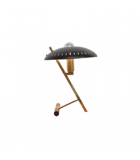
Louis Kalff
<p><img src="https://www.galerie44.com/img/cms/Designers/louis-kalff-galerie44.jpg" alt="" width="1440" height="521" /></p> <p> </p> <p style="box-sizing: border-box; margin: 0px; padding: 0px; border: 0px; outline: 0px; font-family: futurapt-book-webfont, Tahoma, Arial, Helvetica, sans-serif; font-size: 19.2px;">Considered one of the pioneers of industrial design of the 20<sup style="box-sizing: border-box; margin: 0px; padding: 0px; border: 0px; outline: 0px;">th</sup> century, Louis Christianna Kalff was born in 1897. This Dutch graphic designer studied object design, sculpture, ceramics <g class="gr_ gr_18 gr-alert gr_gramm gr_inline_cards gr_run_anim Punctuation only-ins replaceWithoutSep" id="18" data-gr-id="18">and</g> architecture. He began his career in the advertising department of the appliances company Philips, a company he joined in 1924. He quickly becomes the head of the department and participates to the design of the brand logo.</p> <p style="box-sizing: border-box; margin: 0px; padding: 0px; border: 0px; outline: 0px; font-family: futurapt-book-webfont, Tahoma, Arial, Helvetica, sans-serif; font-size: 19.2px;"> </p> <p style="box-sizing: border-box; margin: 0px; padding: 0px; border: 0px; outline: 0px; font-family: futurapt-book-webfont, Tahoma, Arial, Helvetica, sans-serif; font-size: 19.2px;">Five years later, he creates a lamp design workshop at Philips (see the table Z lamp), before becoming the artistic director of the company. In the <g class="gr_ gr_15 gr-alert gr_gramm gr_inline_cards gr_run_anim Grammar multiReplace" id="15" data-gr-id="15">1930’s</g>, Louis Kalff is appointed <g class="gr_ gr_14 gr-alert gr_gramm gr_inline_cards gr_run_anim Grammar only-ins doubleReplace replaceWithoutSep" id="14" data-gr-id="14">head</g> of the lighting for big scale events at the World Exhibition in Barcelona, Antwerp <g class="gr_ gr_16 gr-alert gr_gramm gr_inline_cards gr_run_anim Punctuation only-ins replaceWithoutSep" id="16" data-gr-id="16">and</g> Paris.</p> <p style="box-sizing: border-box; margin: 0px; padding: 0px; border: 0px; outline: 0px; font-family: futurapt-book-webfont, Tahoma, Arial, Helvetica, sans-serif; font-size: 19.2px;"> </p> <p style="box-sizing: border-box; margin: 0px; padding: 0px; border: 0px; outline: 0px; font-family: futurapt-book-webfont, Tahoma, Arial, Helvetica, sans-serif; font-size: 19.2px;">In parallel, Louis Kalff works free-lance and designs posters for the Scheveningen beach resort in the Netherlands for Radio-Holland and realized book covers as well. An architect too, Louis Kalff designs among others, the Eindhoven Astronomical <g class="gr_ gr_17 gr-alert gr_spell gr_inline_cards gr_run_anim ContextualSpelling ins-del multiReplace" id="17" data-gr-id="17">Obervatory</g>. He works at Philips until his retirement in 1960. Louis Kalff died in 1976. </p> -
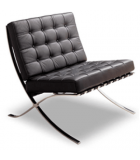
Mies van der Rohe
<p><img src="https://www.galerie44.com/img/cms/Designers/ludwig-mies-van-der-rohe-galerie44.jpg" alt="" width="1440" height="521" /></p> <p> </p> <p style="box-sizing: border-box; margin: 0px; padding: 0px; border: 0px; outline: 0px; font-family: futurapt-book-webfont, Tahoma, Arial, Helvetica, sans-serif; font-size: 19.2px;">Born in 1886 in Germany, Ludwig Mies van der Rohe is one of the most influential architects of the 20<sup style="box-sizing: border-box; margin: 0px; padding: 0px; border: 0px; outline: 0px;">th</sup> Century. His architectural projects are characterized by their clear shape and the intensive use of glass, steel <g class="gr_ gr_18 gr-alert gr_gramm gr_inline_cards gr_run_anim Punctuation only-ins replaceWithoutSep" id="18" data-gr-id="18">and</g> concrete.</p> <p style="box-sizing: border-box; margin: 0px; padding: 0px; border: 0px; outline: 0px; font-family: futurapt-book-webfont, Tahoma, Arial, Helvetica, sans-serif; font-size: 19.2px;"> </p> <p style="box-sizing: border-box; margin: 0px; padding: 0px; border: 0px; outline: 0px; font-family: futurapt-book-webfont, Tahoma, Arial, Helvetica, sans-serif; font-size: 19.2px;">After working in a family business of stone carvers, Mies van der Rohe joined Bruno Paul’s architecture study in Berlin in 1906 and then that of Peter Behrens in 1908. <g class="gr_ gr_15 gr-alert gr_gramm gr_inline_cards gr_run_anim Style multiReplace" id="15" data-gr-id="15">There he</g> meets with Walter Gropius, the future founder of the Bauhaus movement. In 1912, he starts his own architecture firm before being called to arms in World War One.</p> <p style="box-sizing: border-box; margin: 0px; padding: 0px; border: 0px; outline: 0px; font-family: futurapt-book-webfont, Tahoma, Arial, Helvetica, sans-serif; font-size: 19.2px;">In the <g class="gr_ gr_21 gr-alert gr_gramm gr_inline_cards gr_run_anim Grammar multiReplace" id="21" data-gr-id="21">1920’s</g>, his glass facades buildings, such as the one on Friedrichstaße get a lot of attention. But the architect also designs furniture: in 1929 for the Universal Exhibition in Barcelona, Mies van der Rohe not only designs the German Pavilion, but also the Barcelona range of chairs and bench seat (see also the MR20 chair and desk chair 255 model)</p> <p style="box-sizing: border-box; margin: 0px; padding: 0px; border: 0px; outline: 0px; font-family: futurapt-book-webfont, Tahoma, Arial, Helvetica, sans-serif; font-size: 19.2px;"> </p> <p style="box-sizing: border-box; margin: 0px; padding: 0px; border: 0px; outline: 0px; font-family: futurapt-book-webfont, Tahoma, Arial, Helvetica, sans-serif; font-size: 19.2px;">In 1937, Ludwig Mies van der Rohe goes to the United States into exile with the rise of Nazism. There, he directs the Chicago Institute of Technology school of architecture and he dedicates himself to skyscraper building. He died in Chicago in 1969.</p> -
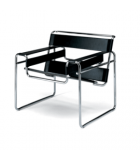
Marcel Breuer
<p><img src="https://www.galerie44.com/img/cms/Designers/marcel-breuer-galerie44.jpg" alt="" width="1440" height="521" /></p> <p> </p> <p style="box-sizing: border-box; margin: 0px; padding: 0px; border: 0px; outline: 0px; font-family: futurapt-book-webfont, Tahoma, Arial, Helvetica, sans-serif; font-size: 19.2px;">Born in 1902 in Hungary, Marcel Lajos Breuer is one of the fathers of modernism. A student from 1920 at the famous Bauhaus architecture and applied arts school in Germany, he then spends one year in Paris in an architecture firm. He is then invited by its director Walter Gropius to return there as a teacher in 1925. During this period, he creates the Wassily B3 chair (1925), considered as the first chair in curved steel tubes inspired by a bicycle handlebar. He leaves the Bauhaus in 1938 and works in Berlin where he continues to create steel tubular furniture-his hallmark (see also the B65 desk, the Cesca B32 chair baptized after his daughter’s name, Francesca).</p> <p style="box-sizing: border-box; margin: 0px; padding: 0px; border: 0px; outline: 0px; font-family: futurapt-book-webfont, Tahoma, Arial, Helvetica, sans-serif; font-size: 19.2px;"> </p> <p style="box-sizing: border-box; margin: 0px; padding: 0px; border: 0px; outline: 0px; font-family: futurapt-book-webfont, Tahoma, Arial, Helvetica, sans-serif; font-size: 19.2px;">In 1935, to escape Jewish persecution, Marcel Breuer first settles in London where he is hired in the Isokon company (see the long chair) and then in the United States in 1937. He teaches there, in the Architecture school at Harvard University and works with Walter Gropius. Without giving up industrial design, Marcel Breuer enters a thriving second career: that of <g class="gr_ gr_15 gr-alert gr_gramm gr_inline_cards gr_run_anim Grammar only-ins doubleReplace replaceWithoutSep" id="15" data-gr-id="15">architect</g>. In 1941, he founds his own company in New York. The Geller House I » in Long Island build in 1945 is Marcel Breuer’s first building to integrate the concept of « binuclear » house, separating the bedrooms form the « living » part. He will also be in charge of the realization of the UNESCO head office in 1953. Marcel Breuer died in 1981 in New York. </p> -
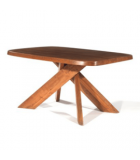
Pierre Chapo
<p><img src="https://www.galerie44.com/img/cms/Designers/pierrre-chapo-galerie44.jpg" alt="" width="1440" height="521" /></p> <p> </p> <p style="text-align: justify;">Pierre Chapo was born in 1927 within a craftsmen Parisian family in Belleville (19<sup style="box-sizing: border-box; margin: 0px; padding: 0px; border: 0px; outline: 0px;">th</sup> district) Before World War II, his family settles in <g class="gr_ gr_16 gr-alert gr_spell gr_inline_cards gr_run_anim ContextualSpelling ins-del multiReplace" id="16" data-gr-id="16">Vierzon</g>, in the Cher department. There, Pierre Chapo discovers a passion for wood while meeting with marine carpenters in 1947. The young Chapo works on this <g class="gr_ gr_15 gr-alert gr_spell gr_inline_cards gr_run_anim ContextualSpelling ins-del" id="15" data-gr-id="15">material-which</g> will become his favorite- in his workshop. He then studies at the Paris Fine Arts School. After a transatlantic trip, in Central America, Mexico, the United States <g class="gr_ gr_14 gr-alert gr_gramm gr_inline_cards gr_run_anim Punctuation only-ins replaceWithoutSep" id="14" data-gr-id="14">and</g> Canada, he returns to France to open his first workshop in Clamart in the Paris suburb.</p> <p style="text-align: justify;">There, Pierre Chapo continues his work on wood. In 1960, he receives the Gold medal of the city of Paris. Focused on associating modernity and tradition, Pierre Chapo remains mostly unknown for the mainstream. His creations are nonetheless put forward during prestigious sales (see the S11 chair, the S24 chair, the T14 table and bench, the T35B table and the T22C coffee table). He suffered from Charcot diseases and died in 1987. </p> -
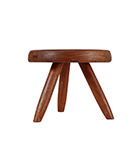
Charlotte Perriand
<p><img src="https://www.galerie44.com/img/cms/Designers/Charlotte-Perriand-galerie44.jpg" alt="" width="1440" height="521" /></p> <p> </p> <p style="box-sizing: border-box; margin: 0px; padding: 0px; border: 0px; outline: 0px; font-family: futurapt-book-webfont, Tahoma, Arial, Helvetica, sans-serif; font-size: 19.2px;">Born from a tailor father and a dressmaker mother for haute-couture in 1903 in Paris, Charlotte Perriand graduates from the Union <g class="gr_ gr_23 gr-alert gr_spell gr_inline_cards gr_run_anim ContextualSpelling ins-del multiReplace" id="23" data-gr-id="23">centrale</g> des arts décoratifs in 1925. From the age of 24, she makes herself known with her “Bar sous le <g class="gr_ gr_25 gr-alert gr_spell gr_inline_cards gr_run_anim ContextualSpelling ins-del multiReplace" id="25" data-gr-id="25"><g class="gr_ gr_25 gr-alert gr_spell gr_inline_cards gr_run_anim ContextualSpelling ins-del multiReplace" id="25" data-gr-id="25">toit</g></g>” in metal, created for her apartment-workshop on Saint-Sulpice square, which was acclaimed by art critiques of the time.</p> <p style="box-sizing: border-box; margin: 0px; padding: 0px; border: 0px; outline: 0px; font-family: futurapt-book-webfont, Tahoma, Arial, Helvetica, sans-serif; font-size: 19.2px;"> </p> <p style="box-sizing: border-box; margin: 0px; padding: 0px; border: 0px; outline: 0px; font-family: futurapt-book-webfont, Tahoma, Arial, Helvetica, sans-serif; font-size: 19.2px;">She then starts to work alongside Pierre Jeanneret and Le Corbusier.</p> <p style="box-sizing: border-box; margin: 0px; padding: 0px; border: 0px; outline: 0px; font-family: futurapt-book-webfont, Tahoma, Arial, Helvetica, sans-serif; font-size: 19.2px;">She is an associate in their workshop in 1928 and works with them <g class="gr_ gr_26 gr-alert gr_gramm gr_inline_cards gr_run_anim Grammar multiReplace" id="26" data-gr-id="26"><g class="gr_ gr_26 gr-alert gr_gramm gr_inline_cards gr_run_anim Grammar multiReplace" id="26" data-gr-id="26">during</g></g> ten years. A partnership which produces pieces that have become iconic such as the B308 table, the B206 long-chair or the Grand Confort armchair. She supplies, among others, the Villa of the banker La Roche in the Paris 16<sup style="box-sizing: border-box; margin: 0px; padding: 0px; border: 0px; outline: 0px;">th</sup> district and that of the Church family in Ville d’Avray (Hauts-de-Seine department).</p> <p style="box-sizing: border-box; margin: 0px; padding: 0px; border: 0px; outline: 0px; font-family: futurapt-book-webfont, Tahoma, Arial, Helvetica, sans-serif; font-size: 19.2px;"> </p> <p style="box-sizing: border-box; margin: 0px; padding: 0px; border: 0px; outline: 0px; font-family: futurapt-book-webfont, Tahoma, Arial, Helvetica, sans-serif; font-size: 19.2px;">From 1929, alongside René Herbst, Pierre Chareau, Robert Mallet-Stevens or again Eileen Gray, she founds the UAM (Union des Artistes Modernes), an avant-garde movement willing to join modernism and rationalism together, all the while preserving tradition.</p> <p style="box-sizing: border-box; margin: 0px; padding: 0px; border: 0px; outline: 0px; font-family: futurapt-book-webfont, Tahoma, Arial, Helvetica, sans-serif; font-size: 19.2px;">Charlotte Perriand multiplies research on minimalistic habitat, but also on the modulable week-end house and the prefab mountain refuge. In the <g class="gr_ gr_29 gr-alert gr_gramm gr_inline_cards gr_run_anim Grammar multiReplace" id="29" data-gr-id="29">1940’s</g>, she is invited as an advisor in industrial art in Japan, a trip which will give her a taste for wood, straw <g class="gr_ gr_30 gr-alert gr_gramm gr_inline_cards gr_run_anim Punctuation only-ins replaceWithoutSep" id="30" data-gr-id="30">and</g> bamboo. When back home, she resumes her research on collective equipment with the planning of the Cité International Universitaire de Paris in 1952. For the occasion, she creates multifunctional furniture.</p> <p style="box-sizing: border-box; margin: 0px; padding: 0px; border: 0px; outline: 0px; font-family: futurapt-book-webfont, Tahoma, Arial, Helvetica, sans-serif; font-size: 19.2px;">Charlotte Perriand devised a new concept of the habitat with a strong human dimension, influenced by her pro-communist political involvement. Her passion for the mountains leads her to participate in the creation of Les Arcs ski resort in Savoie (1967-1989). It’s the achievement of her research on collective habitat and interior arrangement. Charlotte Perriand died in 1999 in Paris. Her furniture has been reissued in 2004 by Cassina. </p> -

Bernard-Albin Gras
<p><img src="https://www.galerie44.com/img/cms/Designers/bernard-albin-galerie44.jpg" alt="" width="1440" height="521" /></p> <p> </p> <p style="text-align: justify;">Born in 1886 in Saint Raphaël from a cartoonist father, Bernard-Albin Gras is the first designer of lamps of the 20<sup style="box-sizing: border-box; margin: 0px; padding: 0px; border: 0px; outline: 0px;">th</sup> century. This engineer has deposed many patents during his career, but none of them has ever known the success of the Gras lamp, manufactured a century later.</p> <p style="text-align: justify;">It’s in 1921 that Bernard-Albin Gras creates in Paris his range of lamps originally destined to the industry and firms. He got a medal from the Concours <g class="gr_ gr_18 gr-alert gr_gramm gr_inline_cards gr_run_anim Style multiReplace" id="18" data-gr-id="18">Lépine for</g> his Gras lamp which broke with conventions of <g class="gr_ gr_17 gr-alert gr_gramm gr_inline_cards gr_run_anim Grammar only-ins doubleReplace replaceWithoutSep" id="17" data-gr-id="17">model</g> of the time and surprised with its ergonomics, the simplicity of the mechanics without screws and welding, making it extremely robust.</p> <p style="text-align: justify;">Quickly, it will get the interest from French architects and decorators such as Le Corbusier who will himself use his lamps in his own firm before spreading it in most of his works. Used as much in workshops as in interior decoration, the Gras lamp is declined in various models (see table lamps models, models 201, 205 and 207, and wall-lamp 222) and is the embodiment of the golden age of French design. Eileen Gray, George Braque or again Matisse contributed to <g class="gr_ gr_19 gr-alert gr_gramm gr_inline_cards gr_run_anim Grammar multiReplace" id="19" data-gr-id="19">build</g> this legend. </p> <p style="text-align: justify;">His patent was bought back in 1927 by the RAVEL company <g class="gr_ gr_15 gr-alert gr_spell gr_inline_cards gr_run_anim ContextualSpelling multiReplace" id="15" data-gr-id="15">then</g> by the DCW company which reissued many models imitating this lamp since 2008. Bernard-Albin Gras died in 1943 in Montreal. </p> -

Gijs Bakker
<p><img src="https://www.galerie44.com/img/cms/Designers/gijs-bakker-galerie44.jpg" alt="" width="1440" height="521" /></p> <p> </p> <p style="text-align: justify;">Born in 1942 in the Netherlands, Gijs Bakker studied industrial design and Jewelry in Amsterdam and Stockholm. He works for many companies such as Polaroid, Hema or ENO studio. In 1993, he founds the Droog Design company with Renny Ramakers. He becomes the artistic director of that company until 2009 (see the ‘Chair with holes’ chair). He also founds the « Chi ha <g class="gr_ gr_12 gr-alert gr_spell gr_inline_cards gr_run_anim ContextualSpelling" id="12" data-gr-id="12">paura</g> » foundation (« Who’s afraid? » in Italian) in 1996 whose objective is to demonstrate that a jewel is much more than a fashion accessory. During 40 years, he also teaches in many schools.</p> <p style="text-align: justify;">His many activities are a reflection of his creations: diverse and varied. Gijs Bakker designed jewels with Emmy van Leersum, house accessories, home appliances, public spaces, exhibitions <g class="gr_ gr_11 gr-alert gr_gramm gr_inline_cards gr_run_anim Punctuation only-ins replaceWithoutSep" id="11" data-gr-id="11">and</g> furniture (see the Umbrella lamp and the Finger chair). </p> <p></p> -
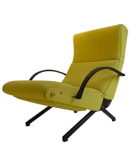
Osvaldo Borsani
<p><img src="https://www.galerie44.com/img/cms/Designers/osvaldo-borsani-galerie44.jpg" alt="" width="1440" height="521" /></p> <p> </p> <p style="box-sizing: border-box; margin: 0px; padding: 0px; border: 0px; outline: 0px; font-family: futurapt-book-webfont, Tahoma, Arial, Helvetica, sans-serif; font-size: 19.2px;">Born in 1911 in Italy, Osvaldo Borsani studied architecture until 1937 at the Polytechnic school in Milan. Even before graduating, he wins the silver medal at the Milan Triennale thanks to his Casa Minima project in 1933. Osvaldo Borsani then works with his family: he first joins the family company Atelier Varedo (then becoming Arredamento Borsani) alongside his father Gaetano Borsani, and then founds with his twin brother Fulgenzio the Tecno company in 1953.</p> <p><span style="font-family: futurapt-book-webfont, Tahoma, Arial, Helvetica, sans-serif; font-size: 19.2px;">At Tecno, a company specialized in technology and innovation, Osvaldo Borsani develops his own furniture among which the famous “sitting machine” that became</span><span style="font-family: futurapt-book-webfont, Tahoma, Arial, Helvetica, sans-serif; font-size: 19.2px;"> </span><g class="gr_ gr_11 gr-alert gr_gramm gr_inline_cards gr_run_anim Grammar multiReplace" id="11" data-gr-id="11">legend</g><span style="font-family: futurapt-book-webfont, Tahoma, Arial, Helvetica, sans-serif; font-size: 19.2px;"> </span><span style="font-family: futurapt-book-webfont, Tahoma, Arial, Helvetica, sans-serif; font-size: 19.2px;">such as the P40 armchair and its 486 distinct postures (see also the D70 convertible sofa or the AT16 coat-hanger). The company collaborates also with Gae Aulenti, Norman Foster, Gio Ponti or Mario Bellini. Osvaldo Borsani dedicates his career at Tecno in charge of design</span><span style="font-family: futurapt-book-webfont, Tahoma, Arial, Helvetica, sans-serif; font-size: 19.2px;"> </span><g class="gr_ gr_12 gr-alert gr_gramm gr_inline_cards gr_run_anim Grammar multiReplace" id="12" data-gr-id="12">during</g><span style="font-family: futurapt-book-webfont, Tahoma, Arial, Helvetica, sans-serif; font-size: 19.2px;"> </span><span style="font-family: futurapt-book-webfont, Tahoma, Arial, Helvetica, sans-serif; font-size: 19.2px;">30 years, receiving the Compasso d’Oro in 1962. He co-founds the Ottagono design review. Osvaldo Borsani died in 1985 in Milan. </span> </p> <p></p> -
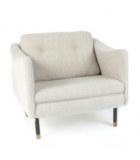
Michel Mortier
<p><img src="https://www.galerie44.com/img/cms/Designers/michel-mortier-galerie44_1.jpg" alt="" width="1440" height="521" /></p> <p> </p> <p style="box-sizing: border-box; margin: 0px; padding: 0px; border: 0px; outline: 0px; font-family: futurapt-book-webfont, Tahoma, Arial, Helvetica, sans-serif; font-size: 19.2px;">Born in Paris in 1925, Michel Mortier first specializes in architecture studying at the Ecole des Arts appliqués à <g class="gr_ gr_21 gr-alert gr_spell gr_inline_cards gr_run_anim ContextualSpelling" id="21" data-gr-id="21">l’industrie</g>. At the end of World War II, in 1944, he joins the Louvre <g class="gr_ gr_18 gr-alert gr_spell gr_inline_cards gr_run_anim ContextualSpelling ins-del multiReplace" id="18" data-gr-id="18">Studium</g> where he turns to interior design. He then joins the furniture department at the Bon Marché in Brussels.</p> <p style="box-sizing: border-box; margin: 0px; padding: 0px; border: 0px; outline: 0px; font-family: futurapt-book-webfont, Tahoma, Arial, Helvetica, sans-serif; font-size: 19.2px;">He is noticed by Marcel Gascoin, then young Michel becomes the first director of the Association d’Aménagement <g class="gr_ gr_23 gr-alert gr_spell gr_inline_cards gr_run_anim ContextualSpelling ins-del multiReplace" id="23" data-gr-id="23">rationnel</g> de <g class="gr_ gr_25 gr-alert gr_spell gr_inline_cards gr_run_anim ContextualSpelling" id="25" data-gr-id="25">l’habitation</g> et des collectivités (Arhec, which works on collective habitat), from 1949 to 1954. Through <g class="gr_ gr_26 gr-alert gr_gramm gr_inline_cards gr_run_anim Punctuation only-ins replaceWithoutSep" id="26" data-gr-id="26">this</g> he is acquainted with Pierre Guariche and Joseph-André Motte, with whom he founds the Atelier de Recherche Plastique (ARP) in the <g class="gr_ gr_24 gr-alert gr_gramm gr_inline_cards gr_run_anim Grammar multiReplace" id="24" data-gr-id="24">1950’s</g>.</p> <p style="box-sizing: border-box; margin: 0px; padding: 0px; border: 0px; outline: 0px; font-family: futurapt-book-webfont, Tahoma, Arial, Helvetica, sans-serif; font-size: 19.2px;">In 1959, Michel Mortier opens his own interior design agency (see the SC104 chair and armchair, the Teckel sofa manufactured by Steiner in the <g class="gr_ gr_13 gr-alert gr_gramm gr_inline_cards gr_run_anim Grammar multiReplace" id="13" data-gr-id="13">1960’s</g>) and then gets introduced to graphics in Canada before taking part in the International Exhibition in 1967.</p> <p style="box-sizing: border-box; margin: 0px; padding: 0px; border: 0px; outline: 0px; font-family: futurapt-book-webfont, Tahoma, Arial, Helvetica, sans-serif; font-size: 19.2px;">Michel Mortier is awarded many prizes among which the Gold medal at the Milan Triennale in 1954 or the René-Gabriel Prize in 1963, he teaches at the Ecole <g class="gr_ gr_17 gr-alert gr_spell gr_inline_cards gr_run_anim ContextualSpelling ins-del multiReplace" id="17" data-gr-id="17">nationale</g> supérieure des arts décoratifs in Paris, at the Ecole des arts appliqués as well as at the Ecole supérieure <g class="gr_ gr_22 gr-alert gr_spell gr_inline_cards gr_run_anim ContextualSpelling" id="22" data-gr-id="22">d'arts</g> <g class="gr_ gr_20 gr-alert gr_spell gr_inline_cards gr_run_anim ContextualSpelling ins-del multiReplace" id="20" data-gr-id="20">graphiques</g> Penninghen. He died in 2015, at the age of 90. </p> -
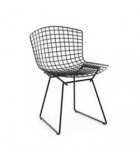
Harry Bertoia
<p><img src="https://www.galerie44.com/img/cms/Designers/harry-bertoia-galerie44.jpg" alt="" width="1440" height="521" /></p> <p> </p> <p style="text-align: justify;">Born in 1915 in Arzene in Italy, Arieto Bertoia a.k.a Harry <g class="gr_ gr_17 gr-alert gr_gramm gr_inline_cards gr_run_anim Punctuation only-del replaceWithoutSep" id="17" data-gr-id="17">Bertoia,</g> is a complete artist. At the age of 15, while visiting his brother in Detroit, he registers at the Cass Technical High School where he studies art, design and jewelry crafts. He then continues his curriculum at the Detroit Society of Arts and Crafts Art School followed by the Cranbrook Educational Community where he first meets the Eames couple. Harry Bertoia will not leave the United States from then on.</p> <p style="text-align: justify;">In 1939, he opens his first ironwork workshop and teaches the creation of jewelry and metalwork. With the war effort underway, he focuses <g class="gr_ gr_21 gr-alert gr_gramm gr_inline_cards gr_run_anim Grammar multiReplace" id="21" data-gr-id="21">of</g> the manufacturing of jewelry and designed together with Charles and Ray Eames. In 1943, Harry Bertoia settles in California to work in the plywood division their company, Evans Products. The designer contributes with Hans and Florence Knoll and designs chairs woven in iron threads as the famous Diamond chair, the Bertoia Side Chair <g class="gr_ gr_27 gr-alert gr_gramm gr_inline_cards gr_run_anim Punctuation only-ins replaceWithoutSep" id="27" data-gr-id="27">and</g> the Bertoia Bird Lounge. These sculptural icons are always sold by the American Knoll company.</p> <p style="text-align: justify;">These pieces of furniture sell so well that Harry Bertoia dedicates himself exclusively to his first passion: Sculpture. He receives <g class="gr_ gr_20 gr-alert gr_gramm gr_inline_cards gr_run_anim Grammar multiReplace" id="20" data-gr-id="20">a first</g> commission in 1953 for the General Motor technical center thanks to Eero Saarinen, with whom he designed the altar at the MIT chapel in 1955. In 1960, Harry Bertoia gets involved in sound sculptures always in metal: he regularly performs at concerts and records several records thanks to his creations. About fifty of his public sculptures are exhibited around the world crafted by this brilliant artist, who died of cancer in 1978. </p> -
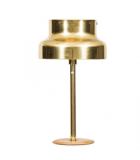
Anders Pehrson
<p><img src="https://www.galerie44.com/img/cms/Designers/anders-pehrson-galerie44.jpg" alt="" width="1440" height="521" /></p> <p> </p> <p style="text-align: justify;">The last child of a brotherhood of designers, Achille Castiglioni was born in 1918 in Milan, developed his taste for the discipline along with his brothers, Pier Giacomo and Livio. In 1944, he graduates in Architecture from the Politecnico of Milan and in 1956, he co-founds the Associazione per il <g class="gr_ gr_16 gr-alert gr_spell gr_inline_cards gr_run_anim ContextualSpelling" id="16" data-gr-id="16">disegno</g> <g class="gr_ gr_14 gr-alert gr_spell gr_inline_cards gr_run_anim ContextualSpelling ins-del multiReplace" id="14" data-gr-id="14">industriale</g> (ADI).</p> <p style="text-align: justify;">Furniture, lamps, appliances…His creations, always filled with humor and ingenuity, are rewarded with seven Compasso d’Oro (1955, 1960, 1962, 1964, 1967, 1979 and 1984). Some are real masterpieces: the Arco lamp post made up of a marble base of 50 kilos and a thin aluminum rod, the Snoopy lamp, inspired by the famous cartoon character or even the Mezzadro stool, a tractor seat on its steel base which reminds of <g class="gr_ gr_21 gr-alert gr_spell gr_inline_cards gr_run_anim ContextualSpelling ins-del" id="21" data-gr-id="21">the</g> from the misuse of objects by the artist Marcel Duchamp.</p> <p style="text-align: justify;">After World Warr II, Achille Castiglioni is <g class="gr_ gr_19 gr-alert gr_gramm gr_inline_cards gr_run_anim Grammar only-ins replaceWithoutSep" id="19" data-gr-id="19">one</g> the most prolific Italian designers. He works with prestigious brands of design. In 1969, he teaches in Turin then in Milan until 1993. Achille Castiglioni died in 2002. Some of his creations are still manufactured and still exhibited in the greatest international museums such as the MoMA in New York. </p> -
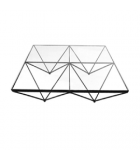
Paolo Piva
<p><img src="https://www.galerie44.com/img/cms/Designers/paolo-piva-galerie44.jpg" alt="" width="1440" height="521" /></p> <p> </p> <p style="text-align: justify;">Born in 1950 in Adria in Italy, the designer Paolo Piva starts by studying architecture at the Venice University in 1968. In 1970, he follows classes at the International University of Art in Venice and works from 1975 with the Venice History and Architecture Institute and the Vienna Applied Arts Academy for the realization of the « Vienne Rouge » exhibition which finally took place in Rome in 1980.</p> <p style="text-align: justify;">From the <g class="gr_ gr_14 gr-alert gr_gramm gr_inline_cards gr_run_anim Grammar multiReplace" id="14" data-gr-id="14">1970’s</g>, Paolo Piva collaborates with companies which specialize in <g class="gr_ gr_13 gr-alert gr_gramm gr_inline_cards gr_run_anim Grammar multiReplace" id="13" data-gr-id="13">furniture</g> such as Fama, B&B Italia, Giovannetti, Dada, Poliform, Bro's, Tetrad, Wittman, or De Sede. An enthusiast for <g class="gr_ gr_11 gr-alert gr_gramm gr_inline_cards gr_run_anim Grammar only-ins doubleReplace replaceWithoutSep" id="11" data-gr-id="11">minimal</g> design where each functional unit is reduced to its most essential shape, Paolo Piva designs pure furniture, such as glass tables on <g class="gr_ gr_12 gr-alert gr_gramm gr_inline_cards gr_run_anim Grammar only-ins doubleReplace replaceWithoutSep" id="12" data-gr-id="12">metallic</g> base (See the Alanda coffee table)</p> <p style="text-align: justify;">In the <g class="gr_ gr_15 gr-alert gr_gramm gr_inline_cards gr_run_anim Grammar multiReplace" id="15" data-gr-id="15">1980’s</g>, Paolo Piva is commissioned to design the Kuwait embassy in Qatar, decorates stores for clothing stores, realizes the refurbishment of the head office of Charles Jourdain Paris, the Palazzo Remer in Venice. In 1988, Paolo Piva becomes a professor at the Vienna Applied Arts Academy.</p> -
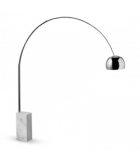
Achille Castiglioni
<p><img src="https://www.galerie44.com/img/cms/Designers/achille-catiglionni-galerie44.jpg" alt="" width="1440" height="521" /></p> <p> </p> <p style="text-align: justify;">The last child of a brotherhood of designers, Achille Castiglioni was born in 1918 in Milan, developed his taste for the discipline along with his brothers, Pier Giacomo and Livio. In 1944, he graduates in Architecture from the Politecnico of Milan and in 1956, he co-founds the Associazione per il <g class="gr_ gr_16 gr-alert gr_spell gr_inline_cards gr_run_anim ContextualSpelling" id="16" data-gr-id="16">disegno</g> <g class="gr_ gr_14 gr-alert gr_spell gr_inline_cards gr_run_anim ContextualSpelling ins-del multiReplace" id="14" data-gr-id="14">industriale</g> (ADI).</p> <p style="text-align: justify;">Furniture, lamps, appliances…His creations, always filled with humor and ingenuity, are rewarded with seven Compasso d’Oro (1955, 1960, 1962, 1964, 1967, 1979 and 1984). Some are real masterpieces: the Arco lamp post made up of a marble base of 50 kilos and a thin aluminum rod, the Snoopy lamp, inspired by the famous cartoon character or even the Mezzadro stool, a tractor seat on its steel base which reminds of <g class="gr_ gr_22 gr-alert gr_spell gr_inline_cards gr_run_anim ContextualSpelling ins-del" id="22" data-gr-id="22">the</g> from the misuse of objects by the artist Marcel Duchamp.</p> <p style="text-align: justify;">After World Warr II, Achille Castiglioni is <g class="gr_ gr_19 gr-alert gr_gramm gr_inline_cards gr_run_anim Grammar only-ins replaceWithoutSep" id="19" data-gr-id="19">one</g> the most prolific Italian designers. He works with prestigious brands of design. In 1969, he teaches in Turin then in Milan until 1993. Achille Castiglioni died in 2002. Some of his creations are still manufactured and still exhibited in the greatest international museums such as the MoMA in New York. </p> -

Max Sauze
<p><img src="https://www.galerie44.com/img/cms/Designers/max-sauze-galerie44.jpg" alt="" width="1440" height="521" /></p> <p> </p> <p style="text-align: justify;">Born in 1933 in Algiers, Max Sauze starts his artistic career in Algeria in 1960 after studying at the Algiers School of Fine Arts and the Camondo School in Paris. In 1963, he settles in Eguilles near Aix-en-Provence in the south of France.</p> <p style="text-align: justify;">The designer works with aluminum and designs shapes to wish he adds lighting. Pioneer in the field, the company bearing his grows very fast from the end of <g class="gr_ gr_18 gr-alert gr_gramm gr_inline_cards gr_run_anim Grammar only-ins replaceWithoutSep" id="18" data-gr-id="18"><g class="gr_ gr_19 gr-alert gr_gramm gr_inline_cards gr_run_anim Grammar multiReplace" id="19" data-gr-id="19">1960’s</g></g>. His aluminum suspensions, wall lights, lamps have a great success (see <g class="gr_ gr_16 gr-alert gr_spell gr_inline_cards gr_run_anim ContextualSpelling ins-del multiReplace" id="16" data-gr-id="16">Andromed</g>, Cassiopé and Orion luminaries). The commercialization throughout Europe, and transatlantic, in the United States and Canada. Max Sauze also creates furniture in chrome wire manufactured by Group, Forum <g class="gr_ gr_20 gr-alert gr_gramm gr_inline_cards gr_run_anim Punctuation only-ins replaceWithoutSep" id="20" data-gr-id="20">and</g> Isocèle.</p> <p style="text-align: justify;">But at the end of the <g class="gr_ gr_22 gr-alert gr_gramm gr_inline_cards gr_run_anim Grammar multiReplace" id="22" data-gr-id="22">1970’s</g>, the development of halogen lamps appears to be a turning <g class="gr_ gr_24 gr-alert gr_gramm gr_inline_cards gr_run_anim Style multiReplace" id="24" data-gr-id="24">point in</g> the lamp sector. Max Sauze turns then to other types of creations. The artist creates surprising works, such as the Livres Fermés and invests into his garden at Eguilles, open to the public and listed by the Ministry of Culture as « a remarkable garden». His son, Sébastien Sauze, takes over the company Max Sauze management and reissues certain lamp models. </p> -
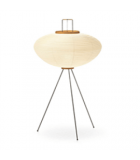
Isamu Noguchi
<p><img src="https://www.galerie44.com/img/cms/Designers/isamu-noguchi-galerie44.jpg" alt="" width="1440" height="521" /></p> <p style="text-align: justify;"> </p> <p style="box-sizing: border-box; margin: 0px; padding: 0px; border: 0px; outline: 0px; font-family: futurapt-book-webfont, Tahoma, Arial, Helvetica, sans-serif; font-size: 19.2px; text-align: justify;">A Japanese-American Sculptor and designer, Isamu Noguchi was born in Los Angeles in 1904 from a Poet father, Yone Noguchi and a writer mother, Leonie Gilmour. He grew up in <g class="gr_ gr_19 gr-alert gr_gramm gr_inline_cards gr_run_anim Punctuation only-del replaceWithoutSep" id="19" data-gr-id="19">Japan,</g> and spent his teenage years in America where he studied medicine at Columbia University while simultaneously following sculpture lessons. In 1924, he studied at the Leonardo da Vincit Art School of New York. His life is a succession of travels between East and West. « My father, Yone Noguchi is Japanese and his poetry has been known for a long time as being a translation from East to West. Il would like to do the same for sculpture. », he wrote in his scholarship application letter to the Guggenheim Foundation that he got in 1927.</p> <p style="box-sizing: border-box; margin: 0px; padding: 0px; border: 0px; outline: 0px; font-family: futurapt-book-webfont, Tahoma, Arial, Helvetica, sans-serif; font-size: 19.2px; text-align: justify;"> </p> <p style="box-sizing: border-box; margin: 0px; padding: 0px; border: 0px; outline: 0px; font-family: futurapt-book-webfont, Tahoma, Arial, Helvetica, sans-serif; font-size: 19.2px; text-align: justify;">Isamu Noguchi first discovered Western avant-garde in New York, then becoming the assistant of Constantin Brâncusi in 1927 in Paris, he goes on to study the Chinese art of the brush and work on clay in Japan. He realized stage decors, namely for the choreographer Martha Graham from 1944 to 1988 and worked together with the Knoll company (see the cylinder lamp table and the cyclone table).</p> <p style="box-sizing: border-box; margin: 0px; padding: 0px; border: 0px; outline: 0px; font-family: futurapt-book-webfont, Tahoma, Arial, Helvetica, sans-serif; font-size: 19.2px; text-align: justify;">His help is requested by the Nippo-American authorities after World War II to revive the city of Gifu, a traditional center for the paper industry. He will then reinvent the lantern with his famous paper and bamboo Akari created between 1951 and 1986 (see the Akari lamp collection in bark paper). The sculptural style, the organic shapes and the sense of emptiness and simplicity of Isamu Noguchi will have a lasting influence on the design of the <g class="gr_ gr_17 gr-alert gr_gramm gr_inline_cards gr_run_anim Grammar multiReplace" id="17" data-gr-id="17">1950’s</g>. The sculptor died in New York in 1988. </p> -
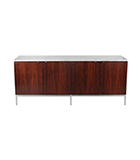
Florence Knoll
<p><img src="https://www.galerie44.com/img/cms/Designers/florence-knoll-galerie44.jpg" alt="" width="1440" height="521" /></p> <p> </p> <p style="text-align: justify;">The American Architect and furniture designer, Florence Knoll was born Florence Marguerite Schust in 1917 in Michigan. An orphan at the age of 12, the young girl went into art studies entering the Kingswood School in Cranbrook, Michigan at the age of 15. She continued studies at the Cranbrook Academy of Arts, the Columbia University School of Architecture where Charles Eames was one of her teachers, and at the Architectural Association of London.</p> <p style="text-align: justify;">At the beginning of the War, Florence Marguerite Schust left England to go back to the United States where she worked along with Walter Gropius and Marcel Breuer who both influenced her work, along with the Bauhaus movement. She then <g class="gr_ gr_21 gr-alert gr_gramm gr_inline_cards gr_run_anim Grammar multiReplace" id="21" data-gr-id="21">continue</g> her training at the Armour Institute, know today as the Illinois Institute of Technology where she was acquainted with the German Architect Ludwig Mies van der Rohe who influenced her approach to design in terms of clarity.</p> <p style="text-align: justify;">In 1941, She <g class="gr_ gr_22 gr-alert gr_gramm gr_inline_cards gr_run_anim Grammar multiReplace" id="22" data-gr-id="22">meet</g> Hans Knoll in New York, who was at the head of his own furniture company he founded in 1938. Two years later, she was hired. They get married in 1946 and the same year the couple creates the Knoll Associates company. Convinced that architects should contribute to the design of furniture, Florence Knoll called on Harry Bertoia, Eero Saarinen, Mies vans der Rohe, Isamu Noguchi or Marcel Breuer initiating the notion of Interior Design.</p> <p style="text-align: justify;">Some of her own creations became design icons of the 20<sup style="box-sizing: border-box; margin: 0px; padding: 0px; border: 0px; outline: 0px;">th</sup> century, thanks to their timelessness, their sleek style <g class="gr_ gr_17 gr-alert gr_gramm gr_inline_cards gr_run_anim Punctuation only-ins replaceWithoutSep" id="17" data-gr-id="17">and</g> neutral tones. At the death of Hans Knoll in 1955, she ran the company until her retirement in 1960. Florence Knoll is the first women to be awarded the Industrial Arts Medal (1961) and in 2002, she received the National Medal of Arts. </p> -
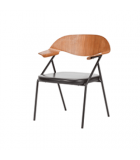
Robin et Lucienne Day
<p><img src="https://www.galerie44.com/img/cms/Designers/robin-and-lucienne-day-galerie44.jpg" alt="" width="1440" height="521" /></p> <p> </p> <p style="text-align: justify;">Born in 1915 in High Wycombe in the United-Kingdom, Robin Day is one the most influential British designer of the 20<sup style="box-sizing: border-box; margin: 0px; padding: 0px; border: 0px; outline: 0px;">th</sup> century. He graduated from the Royal College of Art in 1938. Lucienne Conradi, born in 1917 in <g class="gr_ gr_22 gr-alert gr_spell gr_inline_cards gr_run_anim ContextualSpelling ins-del multiReplace" id="22" data-gr-id="22">Couldson</g> in England, is a renowned textile designer. Once married, Robin and Lucienne Day open their own design study in 1948. The following year, Robin Day participates to the Low-Cost Furniture contest, organized by the Moma in New York, and wins the first place. Spotted by the Hille company, he becomes the design director of that company in 1950. The following year, Robin and Lucienne each receive the Gold medal at the Milan Triennale.</p> <p style="text-align: justify;">Robin Day truly makes it into the history of design at the beginning of the <g class="gr_ gr_20 gr-alert gr_gramm gr_inline_cards gr_run_anim Grammar multiReplace" id="20" data-gr-id="20">1960’s</g> by developing a concept of plastic molding through injection. He then creates to Polyprop chair, made up of polypropylene molded by injection. Inspired by the works of Charles and Ray Eames, It is produced in 14 million copies and becomes a world furniture reference. Added to this taste for technical research, is the will to create practical and economical furniture in a post-war context. The <g class="gr_ gr_16 gr-alert gr_spell gr_inline_cards gr_run_anim ContextualSpelling ins-del multiReplace" id="16" data-gr-id="16">Hillestack</g> armchair, a real icon of the <g class="gr_ gr_21 gr-alert gr_gramm gr_inline_cards gr_run_anim Grammar multiReplace" id="21" data-gr-id="21">1950’s</g> is a perfect illustration (see also the 658 armchair and <g class="gr_ gr_19 gr-alert gr_gramm gr_hide gr_inline_cards gr_run_anim Grammar multiReplace replaceWithoutSep replaceWithoutSep" id="19" data-gr-id="19">the chairs design</g> for the Royal Festival Hall in 1951 or the 675 manufactured by <g class="gr_ gr_18 gr-alert gr_spell gr_inline_cards gr_run_anim ContextualSpelling ins-del multiReplace" id="18" data-gr-id="18">Aiborne</g>.) Robin and Lucienne who worked their whole life in close collaboration, both died in 2010. </p> -
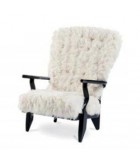
Guillerme & Chambron
<p><img src="https://www.galerie44.com/img/cms/Designers/guilerme-et-chambon-galerie44.jpg" alt="" width="1440" height="521" /></p> <p> </p> <p style="text-align: justify;">Their company, Votre Maison, has marked the history of French design. Guillerme et Chambron get acquainted for the first time in 1940 in a stalag, a prisoners camp in Oriental Prussia. Prisoners, they become friends, but the first post-war years they part. A graduate of the Boule school in 1934, Robert Guillerme puts his talent at the service of the Rogier workshops, a big company in the Lille area. Jacques Chambron, a graduate of the Applied Arts School in Reims, with his own painting and decoration workshop in Paris. In 1948, Chambron and his family leave Paris to settle in Lille. Both men meet again together with Emile Darioseq, owner of a cabinetwork workshop looking for new outputs: Votre Maison will see the day a year later in 1949.</p> <p style="text-align: justify;"><g class="gr_ gr_21 gr-alert gr_spell gr_inline_cards gr_run_anim ContextualSpelling ins-del multiReplace" id="21" data-gr-id="21">Guillerme</g> draws the furniture design, Chambron plays the part of <g class="gr_ gr_22 gr-alert gr_gramm gr_inline_cards gr_run_anim Grammar only-ins doubleReplace replaceWithoutSep" id="22" data-gr-id="22">salesman</g> by welcoming and advising clients, and the Darioseq workshop <g class="gr_ gr_25 gr-alert gr_gramm gr_inline_cards gr_run_anim Grammar multiReplace" id="25" data-gr-id="25">take</g> in charge the manufacturing. Together, they define new furnishings concepts. Buffets, tables <g class="gr_ gr_27 gr-alert gr_gramm gr_inline_cards gr_run_anim Punctuation only-ins replaceWithoutSep" id="27" data-gr-id="27">and</g> chairs which are affordable, robust and authentic (see the study desk model in solid oak and the tables and chairs and 6 chairs in solid oak and <g class="gr_ gr_23 gr-alert gr_spell gr_inline_cards gr_run_anim ContextualSpelling ins-del multiReplace" id="23" data-gr-id="23">canework</g>). Well-crafted chair back, polished wood and thick cushions make the reputation of their armchairs and sofas. With the help of Boleslaw Danilowski a ceramist, they combine wood and tiling: a great success. In the <g class="gr_ gr_24 gr-alert gr_gramm gr_inline_cards gr_run_anim Grammar multiReplace" id="24" data-gr-id="24">1970’s</g>, Hervé Chambron, the son of Jacques, also graduates from the Boule school, joins Votre Maison and crafts his own creation when his elders retire, in 1983. The company is terminated in 2000. </p> <p></p> -
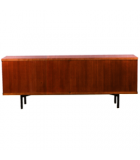
Gérard Guermonprez
<p><img src="https://www.galerie44.com/img/cms/Designers/gerard-guermonprez-galerie44.jpg" alt="" width="1440" height="521" /></p> <p> </p> <p style="box-sizing: border-box; margin: 0px; padding: 0px; border: 0px; outline: 0px; font-family: futurapt-book-webfont, Tahoma, Arial, Helvetica, sans-serif; font-size: 19.2px;">After studying at the Boulle school in Paris, Gerard Guermonprez exposes at the Salon des Arts Menagers (Fair for Domestic Arts) from 1954 to 1976 <g class="gr_ gr_10 gr-alert gr_spell gr_inline_cards gr_run_anim ContextualSpelling ins-del" id="10" data-gr-id="10">where in</g> 1955 he notably presents series of furniture in clear oak mounted on a black painted metal base.</p> <p style="box-sizing: border-box; margin: 0px; padding: 0px; border: 0px; outline: 0px; font-family: futurapt-book-webfont, Tahoma, Arial, Helvetica, sans-serif; font-size: 19.2px;">From 1957, the French designer collaborates with the Magnani workshop for which he designs interior furniture such as tables, chairs or suites. This partnership contributes to his renown and <g class="gr_ gr_12 gr-alert gr_gramm gr_inline_cards gr_run_anim Grammar multiReplace" id="12" data-gr-id="12">give</g> him access to the French market, in Paris and beyond, but also in North Africa (Casablanca, Oran, Algiers).</p> <p style="box-sizing: border-box; margin: 0px; padding: 0px; border: 0px; outline: 0px; font-family: futurapt-book-webfont, Tahoma, Arial, Helvetica, sans-serif; font-size: 19.2px;">His creations are famous for their solidity, simplicity and functional aspect. The most exclusive pieces are even numbered. </p> -
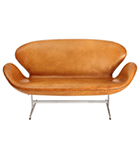
Arne Jacobsen
<p><img src="https://www.galerie44.com/img/cms/Designers/arne-jacobsen-galerie44.jpg" alt="" width="1440" height="521" /></p> <p> </p> <p style="text-align: justify;">He has created the most copied chair in the world: the Fourmi chair. Born in 1902, Arne Jacobsen is a Danish architect and designer whose works have laid the foundation for Scandinavian organic modernism that is still influential today. First trained as a builder from 1924, Arne Jacobsen graduates in architecture at the Royal Danish Academy of Fine Arts in 1927. Until 1920, he works for Paul Holsoe’s architecture study, before starting his own study in 1930. He worked there until his death.</p> <p style="text-align: justify;">The realization of the Bellavista residential building in Klampenbor in the suburb of Copenhagen (1933-34), contributed greatly to his fame and build his reputation as the « Danish Le Corbusier». But his greatest success is without any doubt the Ant Chair (1952), and the several declinations of the model, such as the Serie 7. Produced in some 5 million units, it’s among the biggest commercial success of the history of design. Another of his major realization is the SAS Royal Hotel in Copenhagen (1958-1960), for which he created the famous Egg and Swan armchairs. As <g class="gr_ gr_24 gr-alert gr_spell gr_inline_cards gr_run_anim ContextualSpelling multiReplace" id="24" data-gr-id="24">they name</g> indicate, Arne Jacobsen like getting his inspiration from organic shapes or even Zoomorphism. He dies in 1971. Twenty years later, he is awarded the International Design Award post-mortem. </p> -
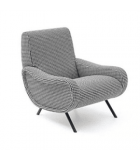
Marco Zanuso
<p><img src="https://www.galerie44.com/img/cms/Designers/marco-zanuso-galerie44_1.jpg" alt="" width="1440" height="521" /></p> <p> </p> <p style="text-align: justify;">Born in 1916 in Milan Marco Zanuso studied at the Polytechnic school in Milan. He founds his own design agency in 1945 and becomes the editor of the Domus magazine created by Gio Ponti, from 1947 to 1949 before joining the Casabella review in the same position from 1952 to 1956. He also widely contributes to the theorization of the modern movement.</p> <p style="text-align: justify;">In 1957, Marco Zanuso associates with the German designer Richard Sapper. Until 1977, they together develop objects and furniture. Both consultants for the Brionvega company, which specializes in the design of electronic devices, they create televisions, <g class="gr_ gr_16 gr-alert gr_gramm gr_inline_cards gr_run_anim Style multiReplace" id="16" data-gr-id="16">radio such</g> as the TS502 in 1964. Both designers have a decisive impact <g class="gr_ gr_13 gr-alert gr_gramm gr_inline_cards gr_run_anim Grammar multiReplace" id="13" data-gr-id="13">regarding</g> the introduction of plastic objects in European households.</p> <p style="text-align: justify;">Marco Zauso is awarded five Compassi d’Oro prizes between 1956 and 1985 and many times the Gold medal at the Milan Triennale, namely in 1951 for his Lady chair (see also the Regent sofa and armchair) He is one of the first designers to delve into the product industrialization issue beyond the mere esthetic question. Marco Zanuso died in 2001. </p> -
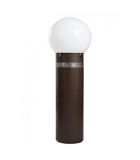
Gae Aulenti
<p><img src="https://www.galerie44.com/img/cms/Designers/gae-aulenti-galerie44.jpg" alt="" width="1440" height="521" /></p> <p> </p> <p style="text-align: justify;">This Italian designer is a pioneer among the generation of women architects in the second half of the 20<sup style="box-sizing: border-box; margin: 0px; padding: 0px; border: 0px; outline: 0px;">th</sup> century. Born in 1927 in Palazzolo <g class="gr_ gr_19 gr-alert gr_spell gr_inline_cards gr_run_anim ContextualSpelling" id="19" data-gr-id="19">della</g> Stella in the north-east of Italy, Gaetana Aulenti graduated in architecture at the Polytechnic <g class="gr_ gr_18 gr-alert gr_spell gr_inline_cards gr_run_anim ContextualSpelling ins-del multiReplace" id="18" data-gr-id="18">school</g> of Milan in 1954. A member from 1964 of the Italian Society of designers, she triumphs at the 1964 Triennale of Milan which awards her the Grand Prize. Gae Aulenti will then on collect titles and rewards previously reserved for men.</p> <p style="text-align: justify;">It’s in the <g class="gr_ gr_17 gr-alert gr_gramm gr_inline_cards gr_run_anim Grammar multiReplace" id="17" data-gr-id="17">1980’s</g> that she reaches word fame. Specialized in the arrangement of great public spaces, Gae Aulenti is famous in France for the interior arrangement of the Musée d’Orsay (1980-1986) and of Beaubourg (1982-1985). She will moreover be decorated with the Legion of honor by François Mitterand in 1987.</p> <p style="text-align: justify;">But Gae Aulenti is also a prolific designer with great talent: from the <g class="gr_ gr_21 gr-alert gr_gramm gr_inline_cards gr_run_anim Grammar multiReplace" id="21" data-gr-id="21">1960’s</g> and <g class="gr_ gr_22 gr-alert gr_gramm gr_inline_cards gr_run_anim Grammar multiReplace" id="22" data-gr-id="22">1970’s</g>, she designs many pieces of furniture and objects, among which the famous Pipistrello lamp in 1965 (see Quadrifoglio lamp). She is also the <g class="gr_ gr_20 gr-alert gr_spell gr_inline_cards gr_run_anim ContextualSpelling ins-del" id="20" data-gr-id="20">chief-editor</g> of the Casabella-continuità <g class="gr_ gr_25 gr-alert gr_gramm gr_inline_cards gr_run_anim Style multiReplace" id="25" data-gr-id="25">magazine from</g> 1955 to 1965, then for Lotus International in 1974 and teaches all over the world, in the United-States, Canada, Spain, Germany, Sweden <g class="gr_ gr_24 gr-alert gr_gramm gr_inline_cards gr_run_anim Punctuation only-ins replaceWithoutSep" id="24" data-gr-id="24">and</g> Iran. In 1991, Gae Aulenti is awarded the Japanese Praemium Imperiale prize for her lifetime achievement.</p> <p style="text-align: justify;">She died in 2012 at the age of 84. </p> -
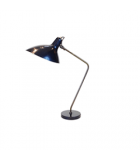
Jean-Boris Lacroix
<p><img src="https://www.galerie44.com/img/cms/Designers/jean-boris-lacroix-galerie44.jpg" alt="" width="1440" height="521" /></p> <p> </p> <p style="text-align: justify;">Born in 1902, Jean-Boris Lacroix starts his career by integrating Paul Dumas’s workshop at the age of 18. The young designer then completes his training as the artistic director at the haute-couture Vionnet house, from 1924 to 1937. At the time, Jean-Boris Lacroix gets acquainted with J.M Frank, Pierre Chareau and Jean Dunand. He designs also his own furniture, combining glass and metal, that he exposes at the Fair of Artists decorators of 1927. Among his many creations, it is the lamp which <g class="gr_ gr_15 gr-alert gr_gramm gr_inline_cards gr_run_anim Grammar multiReplace" id="15" data-gr-id="15">get</g> the greatest interest of the mass audience.</p> <p style="text-align: justify;">Jean-Boris Lacroix is a forerunner not only for the modernism of his creations in the <g class="gr_ gr_12 gr-alert gr_gramm gr_inline_cards gr_run_anim Grammar multiReplace" id="12" data-gr-id="12">1930’s</g> but also through the use of acrylic with which he recovers his lamps. The strictly geometrical shapes, rigorous lines, right-angles, sleek surfaces which characterize his style contributed to his success. Jean-Boris Lacroix died in 1984. </p> -
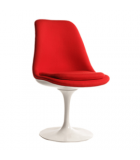
Eero Saarinen
<p><img src="https://www.galerie44.com/img/cms/Designers/eero-saarinen-galerie44.jpg" alt="" width="1440" height="521" /></p> <p> </p> <p style="text-align: justify;">This Finnish American designer born in Finland in 1910 from an artist mother and an architect father, Eliel Saarinen. His family emigrates to the United States in 1923 and settles in Michigan. After studying sculpture in 1929 and 1930 at the Grande Chaumière academy in Paris, Eero Saarinen follows with architecture study at Yale University until 1934. He gets a scholarship thanks to which he travels throughout Europe. In 1936, Eero Saarinen works in his father’s Architecture firm. His constructions <g class="gr_ gr_23 gr-alert gr_gramm gr_inline_cards gr_run_anim Grammar only-ins replaceWithoutSep" id="23" data-gr-id="23">such</g> the Gateway Arch in Saint Louis or the CBS headquarters in New York are marked by a <g class="gr_ gr_22 gr-alert gr_spell gr_inline_cards gr_run_anim ContextualSpelling ins-del" id="22" data-gr-id="22">heterogenous</g> and international style. The TWA terminal of JFK airport in New York is considered a masterpiece of architecture.</p> <p style="text-align: justify;">Also in charge of classes at Cranbrook-where his father is the president-Eero Saarinen there meets with Charles Eames. These two passionate of new materials and new processes become friends and jointly design a range of furniture in molded plywood.</p> <p style="text-align: justify;">Together, they participate in 1940 to the « Organic Design in Home Furnishings » MoMA contest in New York. In Cranbrook, Eero Saarinen gets to know Florence Knoll. She will invite him to design furniture for Knoll International. Some of his pieces have become design best-sellers in the 1950’s such as the Tulipe chair (See the Conference chair, the Womb chair or the Tulipe table and its marble plateau). Structural curves and <g class="gr_ gr_20 gr-alert gr_gramm gr_inline_cards gr_run_anim Grammar only-del replaceWithoutSep" id="20" data-gr-id="20">a concern</g> for visual and practical unity; his demanding style reflect each one of his projects. Eero Saarinen is the leader of <g class="gr_ gr_19 gr-alert gr_spell gr_inline_cards gr_run_anim ContextualSpelling ins-del multiReplace" id="19" data-gr-id="19"><g class="gr_ gr_21 gr-alert gr_gramm gr_inline_cards gr_run_anim Grammar only-ins replaceWithoutSep" id="21" data-gr-id="21">second</g> generation</g> Modernism and died from a brain tumor in 1961. </p> -
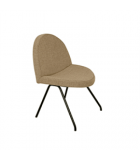
Joseph-André Motte
<p><img src="https://www.galerie44.com/img/cms/Designers/joseph-andre-motte-galerie44.jpg" alt="" width="1440" height="521" /></p> <p> </p> <p style="box-sizing: border-box; margin: 0px; padding: 0px; border: 0px; outline: 0px; font-family: futurapt-book-webfont, Tahoma, Arial, Helvetica, sans-serif; font-size: 19.2px;">The Man who created the famous colored shell chair of the Parisian metro is called Joseph-André Motte. Not very famous in the mainstream, in spite of his professional renown, Motte (1925-2013) started by being the valedictorian of his class at the Ecole des Arts Appliqués à l’Industrie, where he learned from teachers such as René Gabriel and Louis Sognot.</p> <p style="box-sizing: border-box; margin: 0px; padding: 0px; border: 0px; outline: 0px; font-family: futurapt-book-webfont, Tahoma, Arial, Helvetica, sans-serif; font-size: 19.2px;"> </p> <p style="box-sizing: border-box; margin: 0px; padding: 0px; border: 0px; outline: 0px; font-family: futurapt-book-webfont, Tahoma, Arial, Helvetica, sans-serif; font-size: 19.2px;">Motte began his career as a furniture designer at the Bon Marché, one of the oldest Parisian department stores and cooperated with Marcel Gascoin’s workshop. In 1954, he founded his own agency and co-founded the Atelier de Recherche Plastique (Studio for Plastic Research) with Michel Mortier and <a href="https://www.galerie44.com/en/19-pierre-guariche">Pierre Guariche</a>, before working within the <g class="gr_ gr_24 gr-alert gr_spell gr_inline_cards gr_run_anim ContextualSpelling ins-del multiReplace" id="24" data-gr-id="24">Goupe</g> 4 together with René-Jean Caillette, Geneviève Dangles <g class="gr_ gr_29 gr-alert gr_gramm gr_inline_cards gr_run_anim Punctuation only-ins replaceWithoutSep" id="29" data-gr-id="29">and</g> Alain Richard. The French Designer became famous thanks to the Tripod Chair, aka <g class="gr_ gr_26 gr-alert gr_spell gr_inline_cards gr_run_anim ContextualSpelling ins-del multiReplace" id="26" data-gr-id="26">Christera</g>, in rattan, and then works with <g class="gr_ gr_28 gr-alert gr_spell gr_inline_cards gr_run_anim ContextualSpelling ins-del multiReplace" id="28" data-gr-id="28">Disderot</g> for lamps and Steiner the manufacturer from 1954 (see the 771 <g class="gr_ gr_25 gr-alert gr_gramm gr_inline_cards gr_run_anim Grammar multiReplace" id="25" data-gr-id="25">chair</g>, the 770 armchair, and the Prisme office chair). Motte also created luxury furniture for the National Furniture in the <g class="gr_ gr_27 gr-alert gr_gramm gr_inline_cards gr_run_anim Grammar multiReplace" id="27" data-gr-id="27">1960’s</g>.</p> <p style="box-sizing: border-box; margin: 0px; padding: 0px; border: 0px; outline: 0px; font-family: futurapt-book-webfont, Tahoma, Arial, Helvetica, sans-serif; font-size: 19.2px;"> </p> <p style="box-sizing: border-box; margin: 0px; padding: 0px; border: 0px; outline: 0px; font-family: futurapt-book-webfont, Tahoma, Arial, Helvetica, sans-serif; font-size: 19.2px;">In parallel, Joseph-André Motte is commissioned with great works for public equipment such as the layout of the Orly Airport, its geometric furniture, armchairs and couches (1958-1961), the maritime station of Le Havre (1963-1964), the prefecture of Cergy-Pontoise (1970), the Parisian metro stations (from 1973)…the designer also teaches at the Ecole <g class="gr_ gr_17 gr-alert gr_spell gr_inline_cards gr_run_anim ContextualSpelling ins-del multiReplace" id="17" data-gr-id="17">nationale</g> supérieure des Arts Décoratifs (Ensad) as well as the Boulle and Camondo schools. In 1970, he <g class="gr_ gr_21 gr-alert gr_gramm gr_inline_cards gr_run_anim Grammar multiReplace" id="21" data-gr-id="21">is awarded</g> the famous Compasso d’Oro bor the Graphis desk. </p> <p style="box-sizing: border-box; margin: 0px; padding: 0px; border: 0px; outline: 0px; font-family: futurapt-book-webfont, Tahoma, Arial, Helvetica, sans-serif; font-size: 19.2px;"> </p> <p style="box-sizing: border-box; margin: 0px; padding: 0px; border: 0px; outline: 0px; font-family: futurapt-book-webfont, Tahoma, Arial, Helvetica, sans-serif; font-size: 19.2px;">Being part of a generation of forerunners unfairly forgotten who have revisited classical shapes with modern techniques and materials, Joseph-André Motte is the French designer of the French touch elegance and excellence. </p> -
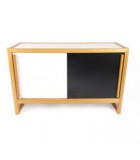
André Sornay
<p><img src="https://www.galerie44.com/img/cms/Designers/andre-sornay-galerie44.jpg" alt="" width="1440" height="521" /></p> <p> </p> <p style="text-align: justify;">After studies at the Fine Arts school in Lyon, André Sornay (1902-2000) takes the lead of his family business when his father died in 1919, at the age of 17. He completely revolutionizes production by going from copies of classical furniture to the creation of modern furniture. He joins the Union des Artistes Modernes alongside avant-gardists such as Charlotte Perriand, Pierre Chareau <g class="gr_ gr_13 gr-alert gr_gramm gr_inline_cards gr_run_anim Punctuation only-ins replaceWithoutSep" id="13" data-gr-id="13">and</g> Francis Jourdain.</p> <p style="text-align: justify;">Clear and geometrical lines, harmonious proportions and great functionality are a hallmark of André Sornay’s creations who works with precious wood, rubber, Permatex (plasticized waterproof fabric) or even metal. If his works do not get recognition before 1925 at the <g class="gr_ gr_14 gr-alert gr_spell gr_inline_cards gr_run_anim ContextualSpelling ins-del multiReplace" id="14" data-gr-id="14">Decorartive</g> Arts and Modern Industrial International Exhibition, he gets a bronze <g class="gr_ gr_16 gr-alert gr_gramm gr_inline_cards gr_run_anim Style multiReplace" id="16" data-gr-id="16">medal for</g> his personal desk in 1937 at the International Exhibition for Modern Life Arts and Techniques.</p> <p style="text-align: justify;">His greatest achievement is due to assembly techniques which are deemed revolutionary such as clouting, patented in 1932 or the « tigette Sornay », trademarked in 1953 (see the furniture collection with the tigette system). In the <g class="gr_ gr_18 gr-alert gr_gramm gr_inline_cards gr_run_anim Grammar multiReplace" id="18" data-gr-id="18">1950’s</g> and <g class="gr_ gr_20 gr-alert gr_gramm gr_inline_cards gr_run_anim Grammar multiReplace" id="20" data-gr-id="20">1960’s</g>, André Sornay hands over control of the company to his children who turn to the manufacturing of furniture for local authorities. The designer, himself retires and finds joy in <g class="gr_ gr_23 gr-alert gr_gramm gr_inline_cards gr_run_anim Grammar multiReplace" id="23" data-gr-id="23">paining</g>. He died in 2000. </p> -
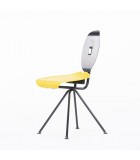
Carlo Forcolini
<div class="page" title="Page 1"> <div class="layoutArea"> <div class="column"> <p><span style="font-size: 12.000000pt; font-family: 'Calibri';"><img src="https://www.galerie44.com/img/cms/carlo-forcolini-designer-italien-galerie44.jpg" alt="" width="1440" height="521" style="display: block; margin-left: auto; margin-right: auto;" /> </span></p> <p style="text-align: justify;"><span style="font-size: 12.000000pt; font-family: 'Calibri';">Italian designer born in Como in 1947, Carlo Forcolini is known for his pieces of furniture that combine functionality and imagination, drawing inspiration from art, literature and cinema. </span></p> <p style="text-align: justify;"><span style="font-size: 12.000000pt; font-family: 'Calibri';">After studying at the Academy of Fine Arts in Milan – like many great designers of his time – from which he graduated in 1969, he took his first steps at the studio of the Castiglioni brothers and then at Vico Magistretti who are two big names from the Italian design scene, where he designed his very first lamp. </span></p> </div> </div> </div> <p style="text-align: justify;"></p> <div class="page" title="Page 2"> <div class="layoutArea"> <div class="column"> <p style="text-align: justify;"><span style="font-size: 12.000000pt; font-family: 'Calibri';">It was in 1978 that he left Italy and moved to London (United Kingdom), to found Alias UK with his brother; an innovation center that will allow him to work on new materials and experiment with design. With Alias UK, he will notably publish his most famous piece: the Miro chair. </span></p> <p style="text-align: justify;"><span style="font-size: 12.000000pt; font-family: 'Calibri';">The 1980s were a prosperous period for him, with exhibitions all around the globe. He forged his work by drawing inspiration from Italian thought and his taste for beauty, while appropriating English pragmatism. He then worked for major publishers such as Amar, BBB Bonacina, Caimi, Cassina, De Padova, Futura or even Artemide, of which he would become the director. </span></p> <p style="text-align: justify;"><span style="font-size: 12.000000pt; font-family: 'Calibri';">In 2009, Carlo Forcolini became CEO of IED Istituto Europeo di Design; one of the most prestigious private institutions in Europe which teaches design, but also visual arts, fashion and communication, before becoming its vice-president in 2012. </span></p> </div> </div> </div> -
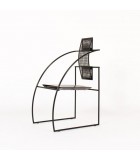
Mario Botta
<div class="page" title="Page 1" style="text-align: justify;"> <div class="layoutArea"> <div class="column"> <p><span style="font-size: 12.000000pt; font-family: 'Calibri';"><img src="https://www.galerie44.com/img/cms/mario-botta-designer-italien-galerie44.jpg" alt="" width="1440" height="521" /></span></p> <p><span style="font-size: 12.000000pt; font-family: 'Calibri';"> </span></p> <p><span style="font-size: 12.000000pt; font-family: 'Calibri';">A key personality in design and architecture, Mario Botta was born in 1943 in Mendrisio, Switzerland. Architect, designer but also teacher, he is recognized for his mastery of geometric and cylindrical shapes, his work with metal, and more particularly chrome. Among his most </span></p> </div> </div> </div> <p style="text-align: justify;"></p> <div class="page" title="Page 2" style="text-align: justify;"> <div class="layoutArea"> <div class="column"> <p><span style="font-size: 12.000000pt; font-family: 'Calibri';">legendary pieces of furniture: the Prima, Seconda, Quarto and Quinta chairs as well as the Zéfiro suspension. </span></p> <p><span style="font-size: 12.000000pt; font-family: 'Calibri';">But his future was far from certain. Born into a modest family of three children, abandoned by their father at the age of 7, Mario Botta was a child in fragile health to whom many activities, considered dangerous, were prohibited. “I had to keep quiet and maybe that's why I started drawing,” he confides. </span></p> <p><span style="font-size: 12.000000pt; font-family: 'Calibri';">Drawing, and art in general, then became a true passion. At 15, he left school to become a building designer and completed his first family home project a year later, before diversifying his work with projects for banks, places of worship, libraries... </span></p> <p><span style="font-size: 12.000000pt; font-family: 'Calibri';">His studies, in Milan then in Venice, enabled him to work for Le Corbusier and Louis Kahn; two encounters that will change his approach to architecture and the aesthetics of his creations, which will become imbued with the brutalist architectural style. </span></p> <p><span style="font-size: 12.000000pt; font-family: 'Calibri';">He started his career in the 1970s by opening his own architectural office in Lugano while teaching in many major architecture schools all over the world. </span></p> <p><span style="font-size: 12.000000pt; font-family: 'Calibri';">Contemporary architecture is marked by no less than 600 projects drawn by his hand such as the Museum of Modern Art in San Francisco, in the United States, the Cathedral of the Resurrection in Evry, in France, the Tinguely Museum in Basel, in Switzerland, the Museum of Modern and Contemporary Art of Trento and Rovereto in Italy or the Bechtler Museum of Modern Art in Charlotte, in the United States. </span></p> </div> </div> </div> -
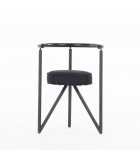
Philippe Starck
<p><img src="https://www.galerie44.com/img/cms/philippe-starck-designer-iconique-galerie44.jpg" alt="" width="1440" height="521" style="display: block; margin-left: auto; margin-right: auto;" /></p> <div class="page" title="Page 2" style="text-align: justify;"> <div class="layoutArea"> <div class="column"> <p><span style="font-size: 12.000000pt; font-family: 'Calibri';"> </span></p> <p><span style="font-size: 12.000000pt; font-family: 'Calibri';">Interior designer, creator, inventor, artistic director... Philippe Starck is one of the most famous designers of his time; an “all-round artist” who excels in more than one area. </span></p> <p><span style="font-size: 12.000000pt; font-family: 'Calibri';">Born on January 18, 1949 in Paris, Philippe Starck very quickly showed a penchant for creation, undoubtedly influenced by the profession of his father, André Starck, an aircraft designer. </span></p> <p><span style="font-size: 12.000000pt; font-family: 'Calibri';">At just twenty years old, he was noticed by the biggest names in the world with his first creation: an inflatable structure for the Perce-Neige association, which already showed his particular interest in living spaces. </span></p> <p><span style="font-size: 12.000000pt; font-family: 'Calibri';">Deeply committed to a world that he dreams of being fairer, he explores his profession with this mission of making life better for as many people as possible through his creations. He will say, in this regard « Nobody is obliged to be a genius, but everyone is obliged to participate. » </span></p> <p><span style="font-size: 12.000000pt; font-family: 'Calibri';">His career really took off at the end of the 1970s with his sculptural seat designs. And it was in 1982 that his fame became worldwide thanks to his Mr Bliss chair, which enabled him to obtain a VIA grant to develop the Miss Dorn chair. </span></p> <p><span style="font-size: 12.000000pt; font-family: 'Calibri';">Furniture, dishes, glasses, solar boat, prefabricated wooden house, individual wind turbine, space housing module... his creativity knows no bounds. He becomes a scenographer of stimulating and unconventional places where he plays on the lighting to make them more beautiful, more elegant, more loving. Its trademark: the elegance of the minimum with a minimal design, often monochrome. </span></p> <p><span style="font-size: 12.000000pt; font-family: 'Calibri';">Today, his creations are exhibited in the greatest museums in the world, in New York, Munich, London, or even in Paris, at the Pompidou center where no less than 64 pieces are exhibited such as the Lola table and chair set. Mundo, the Bubu stool or the prototype of the Coste armchair. </span></p> </div> </div> </div> -
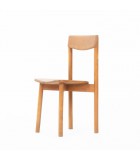
Pierre Gautier-Delaye
<p><img src="https://www.galerie44.com/img/cms/Designers/pierre-gautier-delaye-galerie44-serie-week-end.jpg" alt="" width="1410" height="510" /></p> <p> </p> <p style="text-align: justify;"><span style="font-family: Calibri; font-size: 16px;">Interior architect, furniture and industrial designer... Pierre Gautier Delaye, born in 1923 in Paris, is recognized today as one of the most remarkable figures of his generation. However, nothing predisposed him to this incredible journey.</span><span class="Apple-converted-space" style="font-family: Calibri; font-size: 16px;"> </span></p> <p class="p1" style="margin: 0px 0px 12px; font-variant-numeric: normal; font-variant-east-asian: normal; font-variant-alternates: normal; font-kerning: auto; font-optical-sizing: auto; font-feature-settings: normal; font-variation-settings: normal; font-stretch: normal; font-size: 16px; line-height: normal; font-family: Calibri; text-align: justify;"><span class="s1" style="font-kerning: none;">He met interior design in the mountains, in Haute-Savoie, where he stayed for health reasons. While doing odd jobs to earn a living, he met the architect René Faublée with whom he took his first steps as a draftsman. A vocation was born. He then returned to Paris to join the National School of Decorative Arts in Paris.<span class="Apple-converted-space"> </span></span></p> <p class="p1" style="margin: 0px 0px 12px; font-variant-numeric: normal; font-variant-east-asian: normal; font-variant-alternates: normal; font-kerning: auto; font-optical-sizing: auto; font-feature-settings: normal; font-variation-settings: normal; font-stretch: normal; font-size: 16px; line-height: normal; font-family: Calibri; text-align: justify;"><span class="s1" style="font-kerning: none;">The mountain will not cease to train him, however, since he will complete his end-of-study internship alongside Henry Jacques Le Same, an architect particularly known for his luxurious chalets in Megève for Parisian personalities such as the Baroness de Rothschild.<span class="Apple-converted-space"> </span></span></p> <p class="p1" style="margin: 0px 0px 12px; font-variant-numeric: normal; font-variant-east-asian: normal; font-variant-alternates: normal; font-kerning: auto; font-optical-sizing: auto; font-feature-settings: normal; font-variation-settings: normal; font-stretch: normal; font-size: 16px; line-height: normal; font-family: Calibri; text-align: justify;"><span class="s1" style="font-kerning: none;">After graduating in 1951, he was quickly hired by the Parisian branch of the American agency founded by the industrial designer Raymond Loewy: the Compagnie d'Esthetique Industrielle. Draftsman, workshop foreman then interior designer, he climbed the ladder and then worked for prestigious clients such as Air France or the BHV.<span class="Apple-converted-space"> </span></span></p> <h2 class="p1" style="margin: 0px 0px 12px; font-variant-numeric: normal; font-variant-east-asian: normal; font-variant-alternates: normal; font-kerning: auto; font-optical-sizing: auto; font-feature-settings: normal; font-variation-settings: normal; font-stretch: normal; font-size: 16px; line-height: normal; font-family: Calibri;"><span class="s1" style="font-kerning: none;"><b>Furniture in the “Weekend” series</b></span></h2> <p class="p1" style="margin: 0px 0px 12px; font-variant-numeric: normal; font-variant-east-asian: normal; font-variant-alternates: normal; font-kerning: auto; font-optical-sizing: auto; font-feature-settings: normal; font-variation-settings: normal; font-stretch: normal; font-size: 16px; line-height: normal; font-family: Calibri; text-align: justify;"><span class="s1" style="font-kerning: none;">It was by taking off and creating the "Meubles Week-end" brand with his publisher and friend Lucien Vergnères that Pierre Gautier Delaye became the remarkable designer of mass-produced furniture that we know today.<span class="Apple-converted-space"> </span></span></p> <p class="p1" style="margin: 0px 0px 12px; font-variant-numeric: normal; font-variant-east-asian: normal; font-variant-alternates: normal; font-kerning: auto; font-optical-sizing: auto; font-feature-settings: normal; font-variation-settings: normal; font-stretch: normal; font-size: 16px; line-height: normal; font-family: Calibri; text-align: justify;"><span class="s1" style="font-kerning: none;">Undoubtedly inspired by his stays in the mountains, the Week-end series is made up of a set of furniture characterized by the simplicity of their line, the use of solid wood – in particular Landes pine – and natural straw. Without denying their popular inspiration, each piece is designed with a refined sense of detail, whether in the recess of a chair back or the junction between the top and the legs of a table.<span class="Apple-converted-space"> </span></span></p> <p class="p1" style="margin: 0px 0px 12px; font-variant-numeric: normal; font-variant-east-asian: normal; font-variant-alternates: normal; font-kerning: auto; font-optical-sizing: auto; font-feature-settings: normal; font-variation-settings: normal; font-stretch: normal; font-size: 16px; line-height: normal; font-family: Calibri; text-align: justify;"><span class="s1" style="font-kerning: none;">Success is on the way. He exhibited on several occasions at the Salon des Arts Ménagers and at the Salon des Artistes décorateurs. He will even be awarded the René-Gabriel prize in 1956, for his « Weekend » series.<span class="Apple-converted-space"> </span></span></p> <h2 class="p1" style="margin: 0px 0px 12px; font-variant-numeric: normal; font-variant-east-asian: normal; font-variant-alternates: normal; font-kerning: auto; font-optical-sizing: auto; font-feature-settings: normal; font-variation-settings: normal; font-stretch: normal; font-size: 16px; line-height: normal; font-family: Calibri; text-align: justify;"><span class="s1" style="font-kerning: none;"><b>The capsule collection of Galerie 44<span class="Apple-converted-space"> </span></b></span></h2> <p class="p1" style="margin: 0px 0px 12px; font-variant-numeric: normal; font-variant-east-asian: normal; font-variant-alternates: normal; font-kerning: auto; font-optical-sizing: auto; font-feature-settings: normal; font-variation-settings: normal; font-stretch: normal; font-size: 16px; line-height: normal; font-family: Calibri; text-align: justify;"><span class="s1" style="font-kerning: none;">Today, Pierre Gautier Delaye's creations are invited to the gallery! We are very happy to have been able to acquire a nice batch of authentic Weekend furniture from the 1950s; tables, chairs, and stools with timeless lines, patinated by 'me, which will bring a nice touch of naturalness to a dining room or a kitchen.<span class="Apple-converted-space"> </span></span></p> <p class="p1" style="margin: 0px 0px 12px; font-variant-numeric: normal; font-variant-east-asian: normal; font-variant-alternates: normal; font-kerning: auto; font-optical-sizing: auto; font-feature-settings: normal; font-variation-settings: normal; font-stretch: normal; font-size: 16px; line-height: normal; font-family: Calibri; text-align: justify;"><span class="s1" style="font-kerning: none;">Each piece of furniture has been carefully cleaned and checked in our restoration workshop to guarantee you products in good vintage condition.<span class="Apple-converted-space"> </span></span></p> <p class="p1" style="margin: 0px 0px 12px; font-variant-numeric: normal; font-variant-east-asian: normal; font-variant-alternates: normal; font-kerning: auto; font-optical-sizing: auto; font-feature-settings: normal; font-variation-settings: normal; font-stretch: normal; font-size: 16px; line-height: normal; font-family: Calibri; text-align: justify;"> </p> <p class="p1" style="margin: 0px 0px 12px; font-variant-numeric: normal; font-variant-east-asian: normal; font-variant-alternates: normal; font-kerning: auto; font-optical-sizing: auto; font-feature-settings: normal; font-variation-settings: normal; font-stretch: normal; font-size: 16px; line-height: normal; font-family: Calibri;"><span class="s1" style="font-kerning: none;"><span class="Apple-converted-space"><img src="https://www.galerie44.com/img/cms/Designers/serie-week-end-pierre-gautier-delaye-galerie44.jpg" alt="" width="1410" height="510" style="display: block; margin-left: auto; margin-right: auto;" /> </span></span></p> <p class="p1" style="margin: 0px 0px 12px; font-variant-numeric: normal; font-variant-east-asian: normal; font-variant-alternates: normal; font-kerning: auto; font-optical-sizing: auto; font-feature-settings: normal; font-variation-settings: normal; font-stretch: normal; font-size: 16px; line-height: normal; font-family: Calibri; text-align: justify;"></p> -
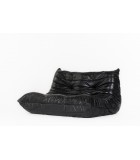
Michel Ducaroy
<p><img src="https://www.galerie44.com/img/cms/fiche-designer-michel-ducaroy.png" alt="" width="1410" height="510" /></p> <p> </p> <p>Known for his long collaboration with Ligne Roset, Michel Ducaroy is a French designer born in Lyon in 1925 into a family of industrialists creating contemporary furniture.</p> <p class="p2" style="margin: 0px; font-variant-numeric: normal; font-variant-east-asian: normal; font-variant-alternates: normal; font-kerning: auto; font-optical-sizing: auto; font-feature-settings: normal; font-variation-settings: normal; font-stretch: normal; font-size: 12px; line-height: normal; font-family: Calibri; min-height: 14px;"></p> <p class="p1" style="margin: 0px; font-variant-numeric: normal; font-variant-east-asian: normal; font-variant-alternates: normal; font-kerning: auto; font-optical-sizing: auto; font-feature-settings: normal; font-variation-settings: normal; font-stretch: normal; font-size: 12px; line-height: normal; font-family: Calibri;">After obtaining his diploma from the École Nationale Supérieure des Beaux-Arts, sculpture section, it was in the family business Chaleyssin - which notably produced furniture for the « Normandie » liner - that Michel Ducaroy began his career.</p> <p class="p2" style="margin: 0px; font-variant-numeric: normal; font-variant-east-asian: normal; font-variant-alternates: normal; font-kerning: auto; font-optical-sizing: auto; font-feature-settings: normal; font-variation-settings: normal; font-stretch: normal; font-size: 12px; line-height: normal; font-family: Calibri; min-height: 14px;"></p> <p class="p1" style="margin: 0px; font-variant-numeric: normal; font-variant-east-asian: normal; font-variant-alternates: normal; font-kerning: auto; font-optical-sizing: auto; font-feature-settings: normal; font-variation-settings: normal; font-stretch: normal; font-size: 12px; line-height: normal; font-family: Calibri;">In 1954, he joined Ligne Roset in Briord, Ain. At the head of the house's design department, he developed his style with timeless lines and refined shapes, focused on comfort and innovation. He will, in fact, take a close interest in the new materials that appeared in the 1960s, such as thermoformed plastic, wadding and new foams.</p> <p class="p2" style="margin: 0px; font-variant-numeric: normal; font-variant-east-asian: normal; font-variant-alternates: normal; font-kerning: auto; font-optical-sizing: auto; font-feature-settings: normal; font-variation-settings: normal; font-stretch: normal; font-size: 12px; line-height: normal; font-family: Calibri; min-height: 14px;"></p> <p class="p1" style="margin: 0px; font-variant-numeric: normal; font-variant-east-asian: normal; font-variant-alternates: normal; font-kerning: auto; font-optical-sizing: auto; font-feature-settings: normal; font-variation-settings: normal; font-stretch: normal; font-size: 12px; line-height: normal; font-family: Calibri;">These innovations associated with his inventive spirit gave birth to the Togo sofa-cushion, presented at the Salon des Arts Ménagers in Paris in 1973; a model sold more than a million copies in 58 countries, which he described in these terms: “a tube of toothpaste folded like a stovepipe and closed at both ends”.</p> <p class="p2" style="margin: 0px; font-variant-numeric: normal; font-variant-east-asian: normal; font-variant-alternates: normal; font-kerning: auto; font-optical-sizing: auto; font-feature-settings: normal; font-variation-settings: normal; font-stretch: normal; font-size: 12px; line-height: normal; font-family: Calibri; min-height: 14px;"></p> <p class="p1" style="margin: 0px; font-variant-numeric: normal; font-variant-east-asian: normal; font-variant-alternates: normal; font-kerning: auto; font-optical-sizing: auto; font-feature-settings: normal; font-variation-settings: normal; font-stretch: normal; font-size: 12px; line-height: normal; font-family: Calibri;">The iconic Togo is the result of long work on other major successful models such as Adria, the first living room with a seat close to the ground, designed in 1968. Then followed the sofa sets, armchairs, poufs and Kashima, Koudra, Safi, Kali and Marsala chairs.</p> <p class="p2" style="margin: 0px; font-variant-numeric: normal; font-variant-east-asian: normal; font-variant-alternates: normal; font-kerning: auto; font-optical-sizing: auto; font-feature-settings: normal; font-variation-settings: normal; font-stretch: normal; font-size: 12px; line-height: normal; font-family: Calibri; min-height: 14px;"></p> <p class="p1" style="margin: 0px; font-variant-numeric: normal; font-variant-east-asian: normal; font-variant-alternates: normal; font-kerning: auto; font-optical-sizing: auto; font-feature-settings: normal; font-variation-settings: normal; font-stretch: normal; font-size: 12px; line-height: normal; font-family: Calibri;">Even today, Ligne Roset continues to exploit the creations of this great designer of the 20th century. Unable to reissue the famous Marsala, the production of molds for the structures of which would have cost too much, a variant designed by Philippe Nigro, Manarola, was released in 2016, seven years after the death of the man who inspired it.</p> <p></p>
